historic NEw england

Stories Hidden in the Marshes
MARIA BALDWIN Stands Center Stage
THE VOICES of Haverhill


THE VOICES of Haverhill
Summer in New England arrives each year with a note of expectancy in the air. Fresh growth appears on the trees, flowers bloom, and people shake of their winter routines to explore and experience all the region has to ofer. From immersing oneself in the varied and incredible landscapes, to learning more about the full history of people who have called this area home, summer brings the promise of adventure and discovery.
Here at Historic New England that sense of growth and excitement is also tangible. We opened the doors to all thirtyeight properties in early June for the season, and it is truly a joy to see visitors learning and experiencing the stories at our sites, both familiar and new. Our Recovering New England’s Voices scholars continue to illuminate histories of marginalized people at our properties, and their stories are now being shared on tours, giving voice to all who lived and worked at our sites.
Historic New England is committed to expanding the voices of all those across the region, as is evident in this issue. From the pioneering leadership of Maria Baldwin, the first Black person in New England to be appointed principal of a majority white school, to the diverse communities across generations in Haverhill, Massachusetts; from the vibrant cultural and religious communities throughout Maine, to the history of those who worked in the coastal salt marshes of the Massachusetts North Shore, both enslaved and free. There are stories waiting to be told around every corner and it is a privilege to play a small part in sharing them with you.
We hope you find inspiration from the stories in this issue. Inspiration to not only learn more, but to find your own voice in contributing to the diverse history of New England.

This is a very dynamic time at our organization with progress rapidly unfolding toward an expansive, reimagined vision of our Haverhill collections facility, plans developing for a revitalized Otis House campus in Boston, preparations thrillingly underway for the second annual Historic New England Summit in Providence this fall, and so much more. I look forward to seeing you often as we do this important work and share the remarkable treasures of this spectacular region.
With profound gratitude for your support,
 Vin Cipolla President and CEO
Vin Cipolla President and CEO
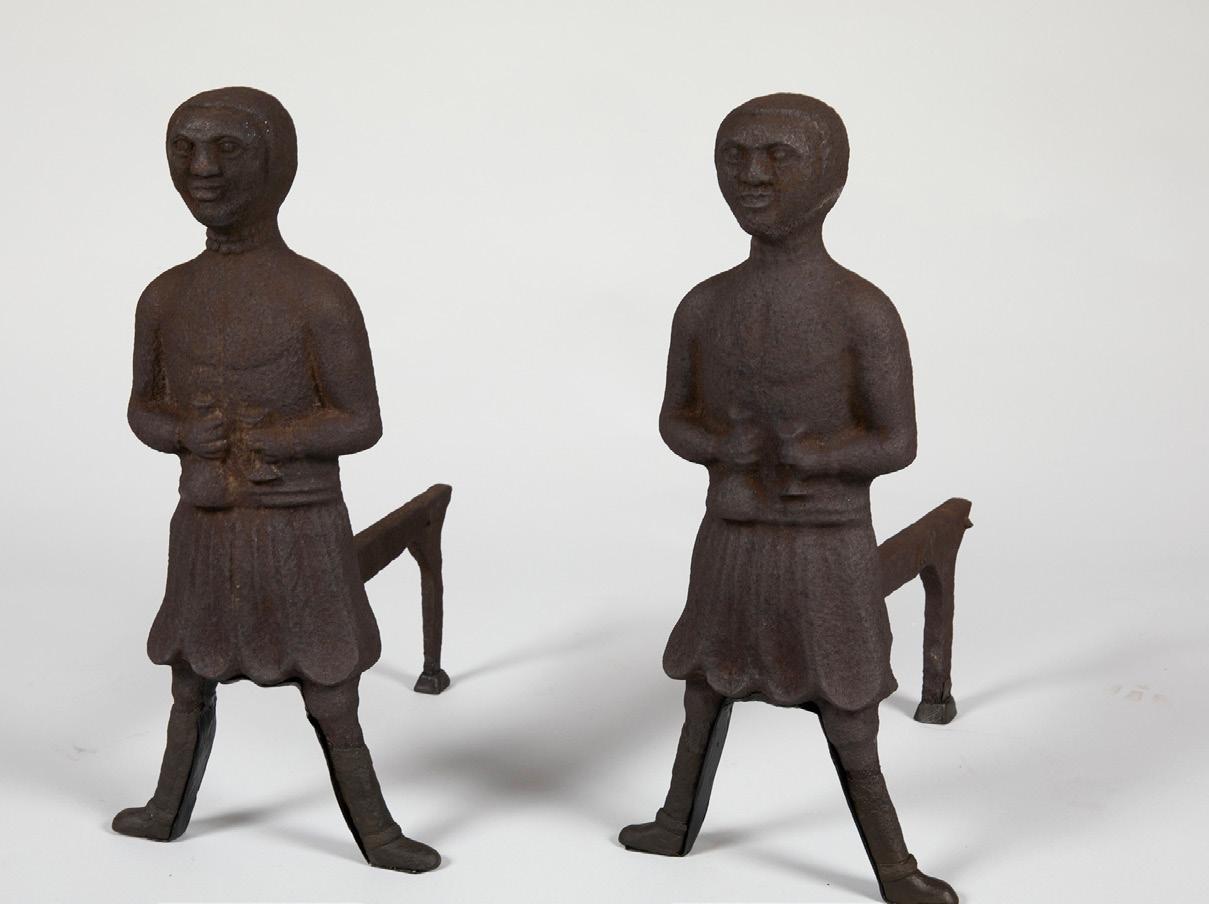
HISTORIC NEW ENGLAND magazine is a benefit of membership. To become a member, visit HistoricNewEngland.org or call 617-994-5910. Comments? Email Info@HistoricNewEngland.org. Historic New England is funded in part by the Massachuse s Cultural Council.
President and CEO: Vin Cipolla Executive Editor: Diane Viera Editorial Review Team: Lorna Condon, Senior Curator of Library and Archives; Erica Lome, Curator Design: Julie Kelly Design
 by C KALIMAH REDD KNIGHT
by C KALIMAH REDD KNIGHT

Kalimah Redd Knight is president of the League of Women for Community Service, Inc., and a 2022 recipient of Historic New England’s Prize for Collecting Works on Paper, recognizing the League’s commitment to preserving its important collection of books, le ers, correspondences, ephemera, photos, ledgers, newspapers, magazines, minutes, and other materials dating back to 1827.
It was February 22, 1897, and Maria Baldwin stood center stage before a crowd at the Brooklyn Institute of Arts and Sciences in New York, ready to deliver the organization’s annual Washington’s Birthday address.
Baldwin’s appearance was highly anticipated. A Black woman
from Cambridge, Massachusetts, she had already made a name for herself in New England for her unusual ability to navigate Black intellectual and activist spaces— she hosted a literary group in her Cambridge home featuring Harvard students W.E.B. Du Bois and William Monroe Trotter—and
her educational leadership within white progressive environments. In 1889, she made her mark as the first Black person in New England appointed principal of a large majority white school—including an entirely white staf—at the Agassiz Elementary School in Cambridge.
Now she was making history
AS WE CONTINUE OUR RESEARCH into the lives of the many marginalized people who lived at, worked at, and interacted with Historic New England’s sites, we are making immediate changes to the tours you’ll experience this summer. Our Recovering New England’s Voices initiative is yielding volumes of new material and we are excited to share the fuller stories of our sites and the region as soon as possible, even if that means expanding the story before making changes to room exhibitions.
At Gilman Garrison House in Exeter, New Hampshire, we had at one time presented an erroneous story of colonists under attack by the local Pennacook people in the 1600s. Although the museum rooms will remain largely unchanged while we plan for the future, the perspective of the tour is entirely diferent, now debunking the mythology of the fortified house.
At the Eustis Estate in Milton, Massachusetts, recent research has added to our understanding of the more than a hundred men and women who worked and lived at the property during the nineteenth and twentieth centuries. Jobs on the large estate ranged from chambermaid to chaufeur to livestock handler. We now include the stories of these once unidentified people in the tour using photographs and oral histories provided by family members.
A visit to Watson Farm in Jamestown, Rhode Island, centers around an outdoor, self-guided walking tour, now expanded to include stories of the Narragansett people who lived on the land for generations before the arrival of European colonists. We also share new stories of tenant farmers and enslaved farmhands who worked the land we now call Watson Farm.
Research continues at all thirty-eight Historic New England sites. Our staf, research fellows, and team of interns continue to recover information, people, and stories. We’ll tell you all about it on your next visit.

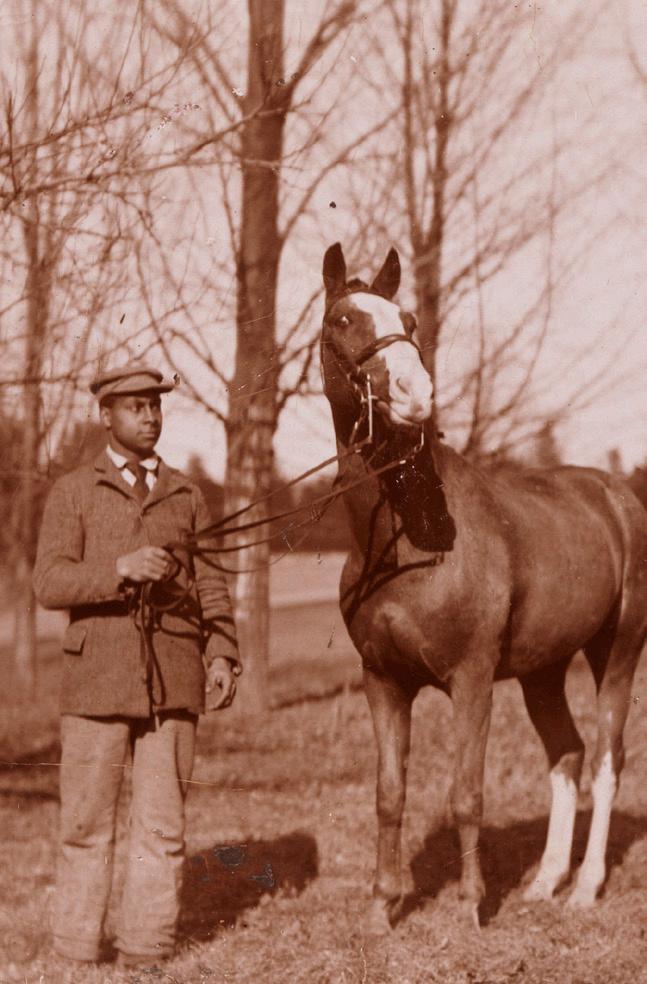

again, as not only the first Black person but also as the first woman invited to speak at one of the most prestigious cultural venues in the country.
Whatever emotions she may have been experiencing in that moment, they were taken over by her masterful elocution and resolve to humanize Black people and laud those courageous enough to speak likewise. To make her point, she extolled the virtue of recently deceased abolitionist Harriet Beecher Stowe, author of Uncle Tom’s Cabin, an anti-slavery novel, and condemned the horror of slavery. “Mrs. Stowe must often have seen some poor fugitive passing from one station to another of the underground railroad,” she told her audience. “Scarcely a week passed that some fresh outrage was not reported, and letters from a brother in New Orleans revealed the horrors of chattel slavery in the far South.”
Her presentation received a thunderous response. The Brooklyn Daily Eagle described her that day as “a colored woman…a type quite as extraordinary in one way as Booker T. Washington is in another. Her English is pure and felicitous, her manner reposeful, and her thoughts and sympathies strong and deep.”
From that point on, Baldwin became a regular on the New England lecture circuit promoting sufrage, anti-lynching, and civil rights advancement.
Fast forward more than twenty years, and Maria (pronounced “muh-RYE-yuh”) Baldwin was leading a small group of African American women to purchase a five-story brownstone in the South End neighborhood of Boston at 558 Massachusetts Avenue in 1920. No doubt Baldwin’s standing in the community, and likely her financial support, enabled the group—a women’s club known as the League of Women for Community Service—to acquire the space.
The building owned by “the League,” as it is less formally known, would go on to become a hub and a de facto cultural repository for the archives and objects of Boston’s Black community for decades. It also would play a small but key role in the civil rights movement, serving as the home to civil rights icon Coretta Scott King, who stayed in the building while attending New England Conservatory of Music School, which had severely



restricted access for Black female students to its dorms. Scott King would famously meet Martin Luther King Jr., who also lived on Massachusetts Avenue while he attended graduate school at Boston University.
Today, the League, which still owns the historic brownstone at 558 Massachusetts Avenue, is one of the longest continuously running Black women’s clubs in the United States. The organization is actively seeking to renovate the building and revitalize the legacy of Baldwin and her co-founders through its collections and educational programming.
The League is at the beginning of a more than $5 million capital campaign to restore the building, and thanks to the support of several major funders, including the City of Boston Community Preservation Act, the Massachusetts Historical Commission, The National Trust for Historic Preservation through the African American Cultural Heritage Action Fund supported by The Klareman Foundation, the History of Equal Rights Grant, and the Henderson Foundation, $1.2 million has already been raised. These funds will support Phase 1 of the project, focusing on restoration
of the brick and mortar, the mansard roof, and refurbishment of its historic windows.
Built in 1857 by wealthy wood importer William Carnes, the brownstone was used as a showcase for his business. The house includes several remarkable features, such as a solid mahogany wood staircase with banisters and a newel post featuring a wood carving of Carnes’s dog, twelve-foot doors imported from Honduras, more than a dozen fireplace mantels made of marble imported from Italy, and ornate gold-finished chandeliers imported from Paris.
In addition to its afliation with this historic space, the League also possesses a collection of community archival materials that it amassed over the years.
Among the key pieces within the collection is a commemorative book of the first-hand, personal accounts of members of the Robert A. Bell Post No. 134, Grand Army of the Republic— all Civil War veterans who served in the 54th and 55th Massachusetts regiments and the 5th Massachusetts Cavalry, units composed of Black soldiers recruited to take up arms in the fight against slavery. Published in 1892, this book was assembled and written by Pauline Hopkins, a noted African American writer. Harvard Radclife Institute’s Schlesinger Library has recently begun a project to preserve, transcribe, and digitize the book. The League’s collection also includes a rare copy of journalist
Ida B. Wells’s first anti-lynching pamphlet, Southern Horrors: Lynch Law in All Its Phases (1892), a work of major historical importance. Only three copies are recorded as being held in libraries (New York Public Library, Howard University, Washington, DC, and East Carolina University, Greenville, North Carolina) and no copies are recorded in auction sales.
“Since the LWCS [The League of Women for Community Service] has occupied the same spacious quarters for its entire existence, the paper records were simply stored on site,” wrote James Goldwasser, president of Locus Solus Rare Books, which assessed the collection in 2022. “While they have been shuttled from room to room to closet to basement, and not kept in ideal archival condition, they nonetheless survive and thus ofer an important opportunity for research in a number of important and often underrepresented areas of scholarship, including the role of Black women in social change during the years between Reconstruction and the modern civil rights movement and Black life in Boston during those same years.”
The League’s collection is currently housed at Simmons University, the only women’s college remaining in the city of Boston, where it is being archived, and portions will be digitized.
The League is seeking to embrace its rich history and share its story. Through a collaboration with Embrace Boston (formerly King Boston), Simmons professor Dr. Johnnie Hamilton-Mason is conducting an ethnographic,
qualitative study on the organization. Her goal is to illuminate the experiences of Black women who boarded at the League’s headquarters from 1940 to 1950, including a young Coretta Scott King. The project will highlight reasons why an autonomous Black women’s organization was both necessary and useful. It will also provide information about the limits of normative feminism and how women ought to be viewed and treated during this era and how Black women framed their lives with an awareness of multiple oppressions and strategies for surviving and flourishing.
The restoration of the building highlights the League as a living piece of history that was forged by Baldwin and her co-founders, individuals who toiled under the most challenging of circumstances and yet achieved so much. These women, including Baldwin’s close friends Josephine St. Pierre Rufn and Florida Rufn Ridley, organized the first colored women’s national conference in Boston in 1895. St. Pierre Rufn, Rufn Ridley, and Baldwin were also co-founders of the Women’s Era Club, a club considered the predecessor to the League that existed from 1892 to 1894. The Women’s Era Club, led by St. Pierre Rufn, published a newspaper—the first and only one for and by Black women—from 1893 to 1897.
Not surprisingly, Baldwin’s life also contained its share of hardship. As Kathleen Weiler’s biography Maria Baldwin’s Worlds (University of Massachusetts

Press, 2019) details, Baldwin lost her family home in Cambridge at the same time her brother went bankrupt in 1905, leading to the conclusion that the two incidents were related. This forced Baldwin to move into a rooming house for professional women in Boston’s South End, where she was the only African American resident and endured racial discrimination from some of the other residents. She also experienced a number of health challenges, including heart disease that was exacerbated by her packed work and speaking schedule. She died suddenly, moments after speaking at a Robert Gould Shaw House Association meeting on January 9, 1922.
Baldwin’s legacy lives on. The school she headed for forty years, the Agassiz Elementary School, was renamed in her honor in 2002. Her overwhelming contributions to the causes of justice and equality, while also playing a major role in establishing a safe and culturally nourishing space for the Black community, especially Black women, may never be fully recognized. Her life symbolizes the potential of an oppressed community and the iterative nature of a liberation struggle to persist amid overwhelming odds. Just like Baldwin’s conviction to stand before a crowd that day in New York and be heard, the League endeavors to uplift the example she and her co-founders embodied for the coming generations. Visit LWCSBoston.org for more information.
Kalimah Redd Knight, president, and the League of Women for Community Service, Inc. (LWCS), received Historic New England’s 2022 Prize for Collecting Works on Paper at the Historic New England Summit in Worcester, Massachusetts, last fall. Knight and the LWCS were recognized for their work preserving and making accessible the organization’s extraordinary archives. Margaret L. Winslow, curator of Historical Collections & Archives at Mount Auburn Cemetery in Cambridge, Massachusetts, also received the 2022 Collector’s Prize for her work overseeing and making accessible the cemetery’s collection of records and objects relating to the history of Mount Auburn and the rural cemetery movement.
Te Collector’s Prize, which is awarded annually, honors those who have assembled or helped save signifcant collections of books, manuscripts, photographs, prints, drawings, and ephemera related to New England and its diverse communities or to the nation as a whole. Nominations for the 2023 prize are now being accepted.
In our Fall 2022 issue we introduced you to our planning for Historic New England’s Center for Preservation and Collections in Haverhill, Massachusetts. In this issue Project Manager Marilyn Keith Daly shares opportunities for the community to engage with us as we envision a dynamic future for the Haverhill Center.
A sufragist’s suit of clothes, a young child’s toy, a chair maker’s innovation, a tattoo flash. These pieces of our region’s powerful and often unexpected collective story can be found at Historic New England’s Center for Preservation and Collections in Haverhill, Massachusetts.
The Haverhill Center is home to one of the world’s largest collections of New England artifacts and archives. Historic New England’s world-class collection comprises more than 125,000 objects – from eighteenth-century shoes to a Vietnam-era protest shirt – and 1.5 million archival items – including photographs, prints and engravings, architectural drawings, books, manuscripts, ephemera, and more.
Each object tells a story, be it one artist’s craft, one person’s journey, or a broader narrative of the human condition. These are the stories that compel and connect us.
Stories are at the heart of the Haverhill Center outreach activities in the coming months. This summer and fall, Historic New England staf will be engaging with residents of Haverhill and the surrounding area at vibrant local events and outdoors at the Haverhill Center to celebrate and participate in the creativity and traditions of the community with an invitation to share stories.
With this outreach, Historic New England is taking early steps in our transformational initiative to create

the Haverhill Center as a dynamic global-nationalregional-local hub of culture and discovery, building on the inspiring design provocation by three major architecture firms presented at the Historic New England Summit last fall.
Attendees at these community events will be invited to record thoughts and stories, with prompts ofered to spark imagination: from object-oriented “Tell Us About Your Shoes” and personal takes such as “Describe Haverhill in One Word,” to stories about what it is like to grow up in Haverhill, work in Haverhill, and live in Haverhill.
The goal for this story-sharing is to enrich New England history with a Haverhill perspective. As the Haverhill Center transforms into a living archive of immersive stories and exciting experiences that resonate across the region and around the world, we want the people of Haverhill to be part of the journey — and part of the history.
Historic New England invites the public to visit us and share your stories at the Haverhill Farmers Market, Saturdays, July 8, July 29, and October 14, 9:00 a.m. to 1:00 p.m.
Historic New England also will host Merrimack Valley Black and Brown Owned Market at the Center at 151 Essex Street on Sunday, July 23, 11:00 a.m. to 3:00 p.m.
Looking to the fall, the Haverhill Center will ofer member tours of the collections and unveil more exciting information about the Haverhill reimagination at this year’s Historic New England Summit in Providence, Rhode Island.
Stories, whether everyday moments or significant life journeys, make up our collective narrative. The stories of its people are Haverhill history.

Phil Primack has reported for weekly and daily newspapers. His freelance writing has appeared in the New York Times, Boston Globe, Columbia Journalism Review, The Nation, and elsewhere. He is the author of New England Country Fair and “Put It Down on Paper”: The Words and Life of Mary Folsom Blair – A Fi y-Year Search (Loom Press, 2022).

Growing up in Haverhill, Massachusetts, in the 1950s and early 1960s, I saw nothing unusual about classmates whose surnames reflected the changing map of Europe. I was Jewish, the girls next door spoke Greek, my high school buddies were Polish, Armenian, Irish, French-Canadian, Italian, and good old Yankee.
But after college, I went to work for a newspaper in eastern Kentucky. Folks there were much more ethnically homogenous but they treasured their roots. When I returned to the Haverhill area in the mid-1970s, that new appreciation — and my hard wiring as a reporter — prompted me to seek out older members of some of the diferent groups that transformed the Queen Slipper City in the early twentieth century.
Hyman “Hymie” Schlafman, standing in 1975 amid the packed shelves of the downtown variety store he ran with his brother for decades, recalled the downtown streets outside being “black with people.”
Other Haverhill residents (next page) interviewed by the author, including his aunt, Sarah Primack, and Vahak and Isabel Bogosian, recalled fleeing their homelands for their lives. Images by author.
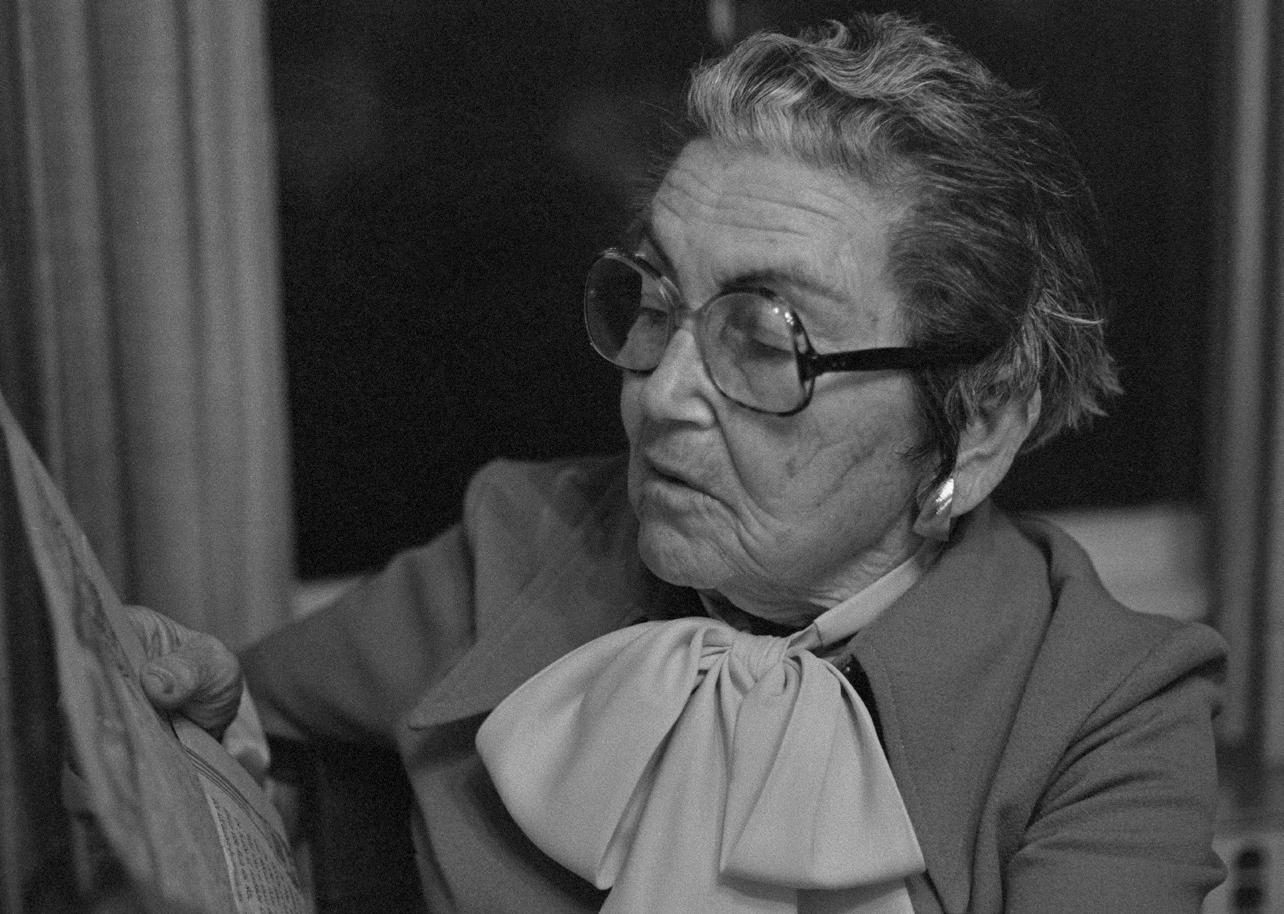
I recorded more than two dozen interviews over the next few years. Some were profoundly personal, from horrific first-hand accounts of escaping genocide to thoughtful takes on the shoe industry’s rise and fall. Interviewees ranged from union organizer Mike Lynch to Sam Tye, one of the owners of Allen Shoe Company, which would become the last shoe factory in Haverhill. Besides broad insights, they captured snippets of a vibrant period, such as when Harry Houdini hung upside down in a straitjacket to promote a downtown theater.
Standing beneath the single bulb that lit the variety store he ran with his brother for sixty years, Hyman Schlafman remembered when the downtown street outside was “black with people” moving through the maze of shoe factories that drew immigrant families such as his to Haverhill in the late nineteenth and early twentieth centuries. Today, that street is lined with restaurants and shops but when we spoke in 1975, few customers perused the floor-to-ceiling shelves crammed with newspapers, cigarettes, and other hazarai, Schlafman’s Yiddish summary of his inventory.
The long-time residents I recorded on cheap cassette tapes nearly fifty years ago recalled much more robust days. Their stories of struggle and success, of setbacks and perseverance, resonate with those told by refugees and immigrants today. Then and now, the simple want of a better life propelled people. When I spoke with him and his wife, Gladys, in 1974, Robert Hartop, the son of English and Canadian parents, recalled arriving in Haverhill on the back of a motorcycle in 1919. “I didn‘t care for the work I had in New Hampshire and I'd heard that Haverhill was booming,” he said. “I’ll tell you, it was the days when you wanted a job, you walked up the street and turned into the first shop. And if you got tired of the work you
were doing, you’d walk out and go up the street to the next one, or the next one. There'd always be work.”
Boom times faded with the Great Depression and changing shoe industry economics, but another key refugee driver – repression or worse in their home countries– remains a brutal reality. Change the dates and other specifics and the horrors my interviewees described could come from current headlines. Vahak Bogosian was fifteen years old when he and a group of other Armenians had to flee Turkish soldiers in 1914. My aunt, Sarah Primack, was blunt about why she and my uncles fled Poland and Russia (borders were changing). “We were running away from fire,” she said. “Some soldiers burned the whole city and we were left with nothing.” She would never forget or forgive that 1918 attack on her shtetl — or the massacre of my uncle Mottle and other Jews there two decades later — but like others, she focused on her new life in Haverhill, where her husband, Isaac, and my grandfather Phil ran the Bradford Market. (McDonald’s golden arches now mark the spot.)
Not that adjusting to new ways came easily, even with simple things. Nicholas Gerros, who was my family’s next door neighbor, traveled by horse wagon from his village in northern Greece to reach the ship that brought him to America in 1912. When he landed, an aid group ofered care packages that included bananas. “We didn’t know how to eat one,” said Gerros, who went on to own a downtown men’s clothing store. “Somebody saw us wondering what to do with it and he showed us.”
Even in their new land, old traumas could haunt. When I spoke in 1978 with Lillian Morris and her husband, Isidore Morris, whose family was among the first Jews to settle in Haverhill, she remembered the 1892 pre-dawn arrival of a circus along River Street, the home, then and now, for many Haverhill
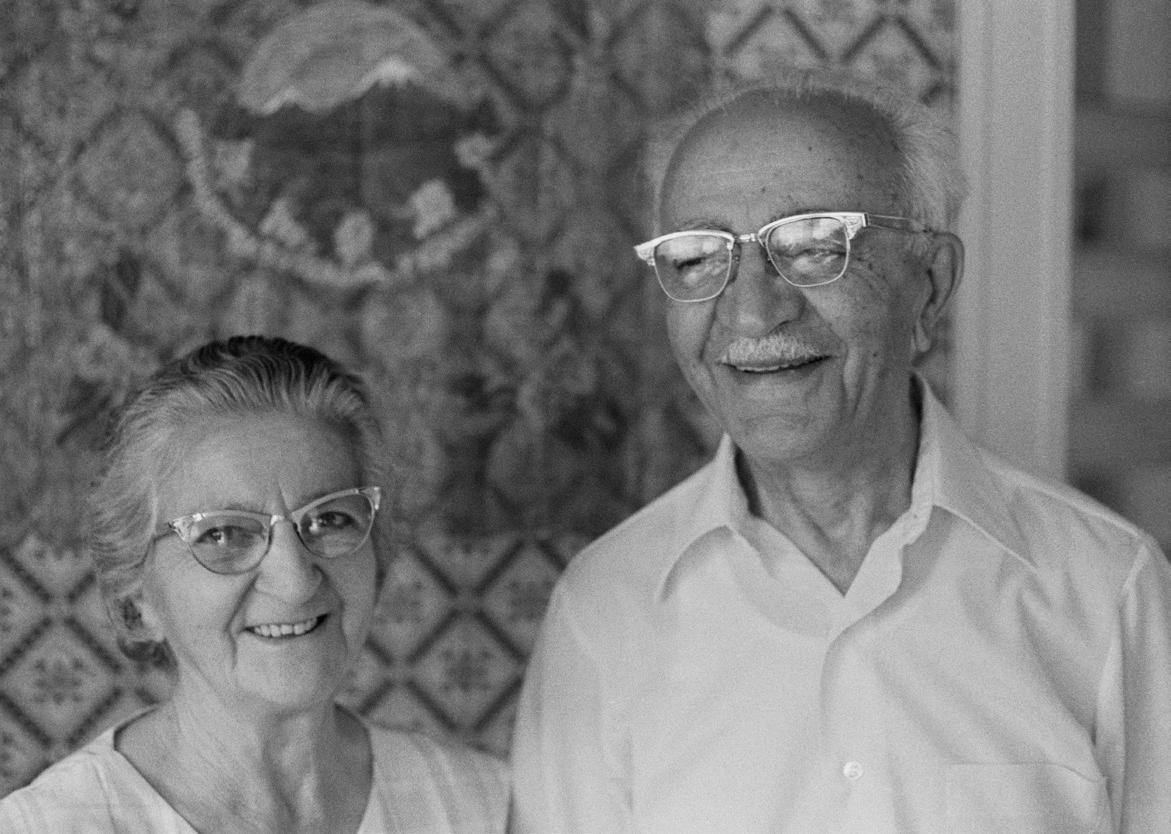
immigrants. “With all the noise, the greenhorns [the term for Jewish newcomers] thought it was a pogrom” and hid in their homes, she said. They hadn’t yet learned about the Fourth of July.
Newcomers often had more to fear than fireworks. Haverhill was fast becoming an ethnic stew, often cooking smoothly but occasionally bubbling over, especially when tight jobs and budgets produced social stress. Joe Moran was born in 1900 to parents born in Galway. He grew up in the largely Irish Acre, working first as a water boy when he was five and eventually becoming a reporter and editor for the Haverhill Gazette. Ethnic groups generally got along, he said – “It was live and let live” – but tensions could flare, especially as immigrants began to outnumber the mostly Yankee population (the ancestors of whom largely eradicated the first residents, including the Pentucket Tribe, from whom Puritans purchased land in what is now Haverhill for three pounds and ten shillings in 1642).
Moran was at the April 3, 1916, “Leyden Riot,” when thousands of mostly Irish protesters disrupted a Haverhill City Hall appearance by an anti-Catholic speaker. “The Ku Klux Klan [also] used to be here pretty good,” added Moran, who covered torch-lit rallies, including one the same year where “they must have had 800 or 900 Ku Kluxers.”
For all their social, economic, and other struggles, Haverhill’s new residents had little desire to return to their native lands. In 1975, Virginia Hoefling (see More Haverhill Stories) asked Concetta Raiti and her daughter, Grace Basile, about moving back to Italy. Maybe to visit, but no more, answered Grace. “[My father’s] life was completely diferent here. There he was a shepherd – he was nothing. Here … he could work in a factory and he didn’t have to be outside in the rain and snow. He started reading and he started knowing what the world was more about.”
And that world was exploding. “In my lifetime, I went from horse cars to a man who walked on the moon,” said Robert Goldbaum, who was born in 1899. “In my lifetime. Just think of it.”
Goldbaum, whose father was a shoemaker, never finished high school but became a shoe factory owner. Compared to the textile mills in nearby Lawrence

and Lowell – ventures that required a lot of capital — creating a Haverhill shoe business, which at times could be just a twelve-foot storefront, was doable for immigrants. “They could aford much more comfortable lives,” he said. “But I don't think that [is why] people decided to migrate to this country … They came here to run away from oppression, from living in a police state, under a yoke of fear. They knew what it meant to be ofered a chance here, a free chance to make a happy life and living.” It was, Goldbaum marveled, a special time. "Strangers," he said, "and look what they produced.”
He and the others I taped decades ago are now long gone. As my own inner clock ticks more insistently — I was in my late twenties when I did my interviews but I’m now much closer to the age my subjects were then – I’ve wanted a good home for these old tapes. Through Historic New England, the words, memories, and lessons they provide will be preserved for generations to come.
While doing his Haverhill interviews, Primack worked with Bertha Woodman who, along with Dorothy Tye and other local Jewish women, led an oral history project that produced an extensive collection of tapes and Woodman’s book, From the Hill to Main Street – Jewish Life & Work in Haverhill, Massachusetts 1840-1940, which was published by the Haverhill Public Library, the repository of those tapes. Primack also assisted Virginia Hoefling who, after raising five children, was completing her deferred undergraduate studies at Bradford College. She had Italian roots and interviewed Haverhill Italians as a class project.
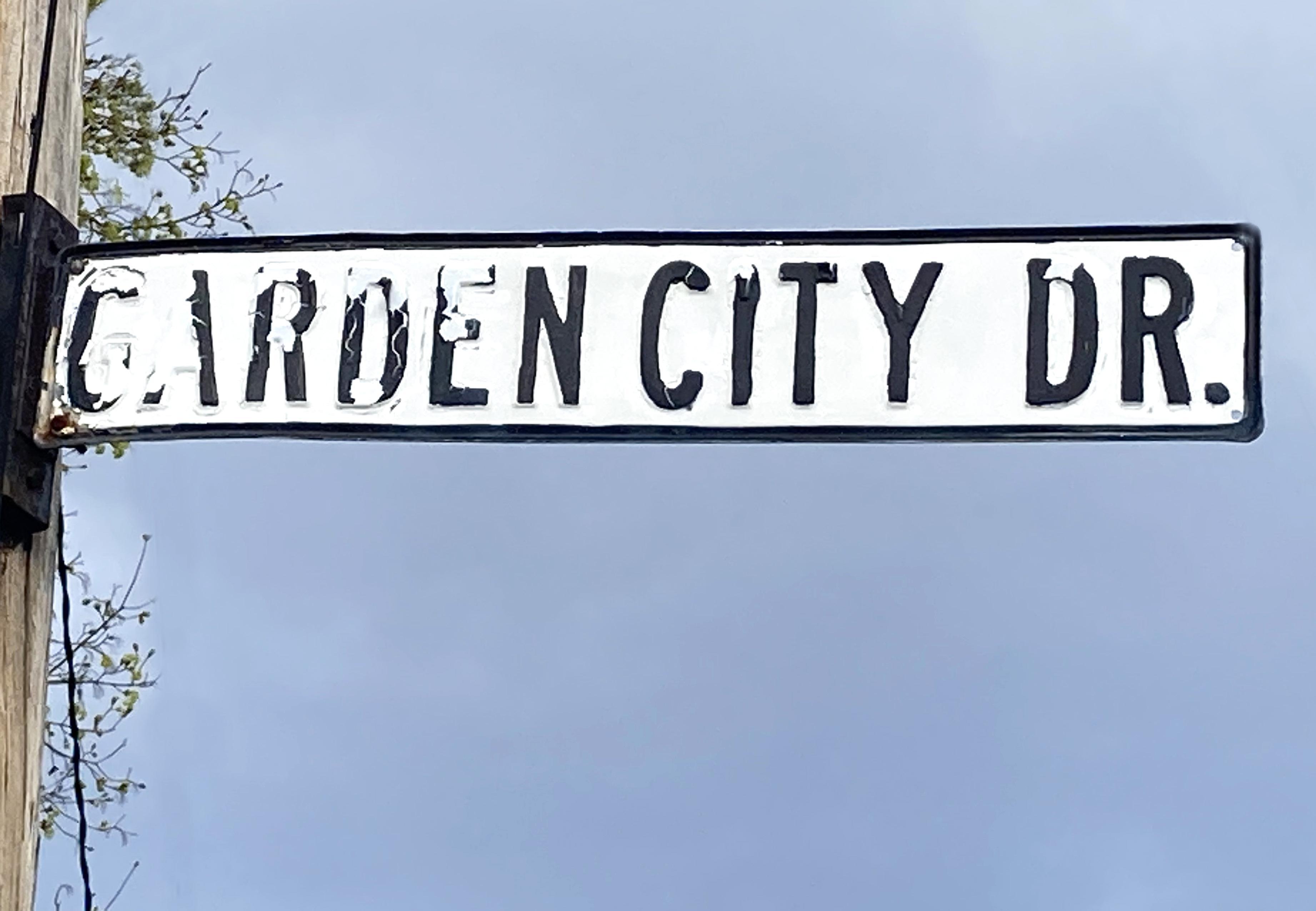

In our winter issue, Jennifer Robinson introduced us to Garden City, a post-World War II suburb in Cranston, Rhode Island, that was a local landmark for its integration of commercial and residential design. Renewed interest in the development has recently emerged as a survey of Garden City’s residential buildings was completed by the Public Archaeology Laboratory in 2022. Te frst large-scale architectural survey of a mid-century suburb in Rhode Island, it illuminates not only the history of the development, but also its context within the postwar built landscape of New England. Te project is in its fnal phases; more information will be available to the public upon completion.
Many thanks are due to Melissa Andrade (Public Archaeology Laboratory) and Joanna Doherty (Rhode Island Historical Preservation & Heritage Commission) for their input and expertise while researching this article.
On any given weekend, Rhode Islanders fock to Garden City’s shopping center like ancient Greeks to the agora – eating, walking, socializing, purchasing. Most are only vaguely aware of the neighborhood beyond, and the former “Main Street” ethos of this shopping destination now populated by national retail chains. Driving
PAGE Extant 1950s-era Garden City street sign. Sign advertising Garden City Shopping Center on New London Avenue (RI-2), c. 1965. Image Courtesy Garden City Center. RIGHT Garden City Apartments, Garden City Drive at Poppy Drive. Early plans for Garden City included these brick-veneer apartment buildings – seven in total, with ninety-four units – described in 1950 in the Cranston Herald as "…miniature replicas of the large apartment houses found in New-York City.” Image by author.
just beyond the perimeter of Midway Avenue on a summer day, there is a familiarity that many Americans would recognize: sprinklers humming, dogs walking, neighbors chatting over iced cofee. But how did a nineteenth-century farm feld and graphite mine transform into this realm of manicured lawns, attached garages, and picture windows? It is an idiom that is so ingrained in the American psyche that it has become nearly invisible – and is rarely viewed as having historic signifcance.

historic buildings and landscapes in New England, which comprise a larger portion of our building stock and are still being discovered and properly documented themselves.
Despite this perception, Garden City has now stood for nearly eighty years, far surpassing the National Park Service’s traditional ff y-year threshold for National Register eligibility. Although a household name in Rhode Island, the development’s complete history and context has not, until recently, been formally investigated or documented. Like many preservation projects, its well-overdue survey was precipitated by demolition – in this case, Garden City’s 1952 International Style elementary school. Because the City of Cranston used state funding for construction of a new school building, the state’s historic preservation ofce, the RIHPHC, was able to secure a survey as mitigation, aware that the plat surrounding the school was likely National Register-eligible. Te resulting survey is comprehensive and illuminates the “how” and “why” of this place in ways that set a vital precedent for new studies to come.
Te opportunity to conduct a survey of this scope was a milestone for the RIHPHC. Although researchers have worked to carefully document other postwar resources in the state, this is Rhode Island’s frst survey of a post-WWII housing development conducted at this scale. By default, the survey is also a benchmark for other New England states. While there are a few studies that highlight postwar housing, the region has generally lagged behind places like California and the Midwest in its recognition of the postwar built environment. Tis is perhaps in part because of the density of earlier
From a historical perspective, Garden City’s survey report reveals that this archetypal Rhode Island neighborhood did not emerge out of a vacuum. It is part of a much larger, layered story, and one that began much earlier than originally thought. Te “Garden City” subdivision, as it is formally known, refers to a fan-shaped section of a larger neighborhood that was constructed in the late 1940s by Italian American developer Nazzareno Meloccaro. However, through close investigation of land records, the survey discovered that land abutting the later Garden City plat was already being subdivided for house lots as early as 1900. Although many homes in this early subdivision, called Eden Crest, were not built until afer World War II, their presence suggests an important connection to an earlier suburban form – the so-called “streetcar suburb” – that emerged in the early 1900s throughout the United States. Streetcar suburbs connected commuters to denser urban areas due to the advent of efcient, electrifed public transportation, and provided a precursor to many postwar developments (in this case, Melocarro’s strategic purchase of adjacent land).
In addition to this clearer timeline, the infuence of Melocarro’s Garden City residential concept became evident through further study. According to the survey, “Nearly all subdivisions designed in Cranston in the 1950s and 1960s were modeled afer Garden City…but without the commercial component of the subdivision.” Te Melocarro real estate empire extended to several other successful developments, further emphasizing the family’s continued reach throughout Rhode Island even afer Nazzareno’s death in 1955.
Most importantly, the report positions Garden City
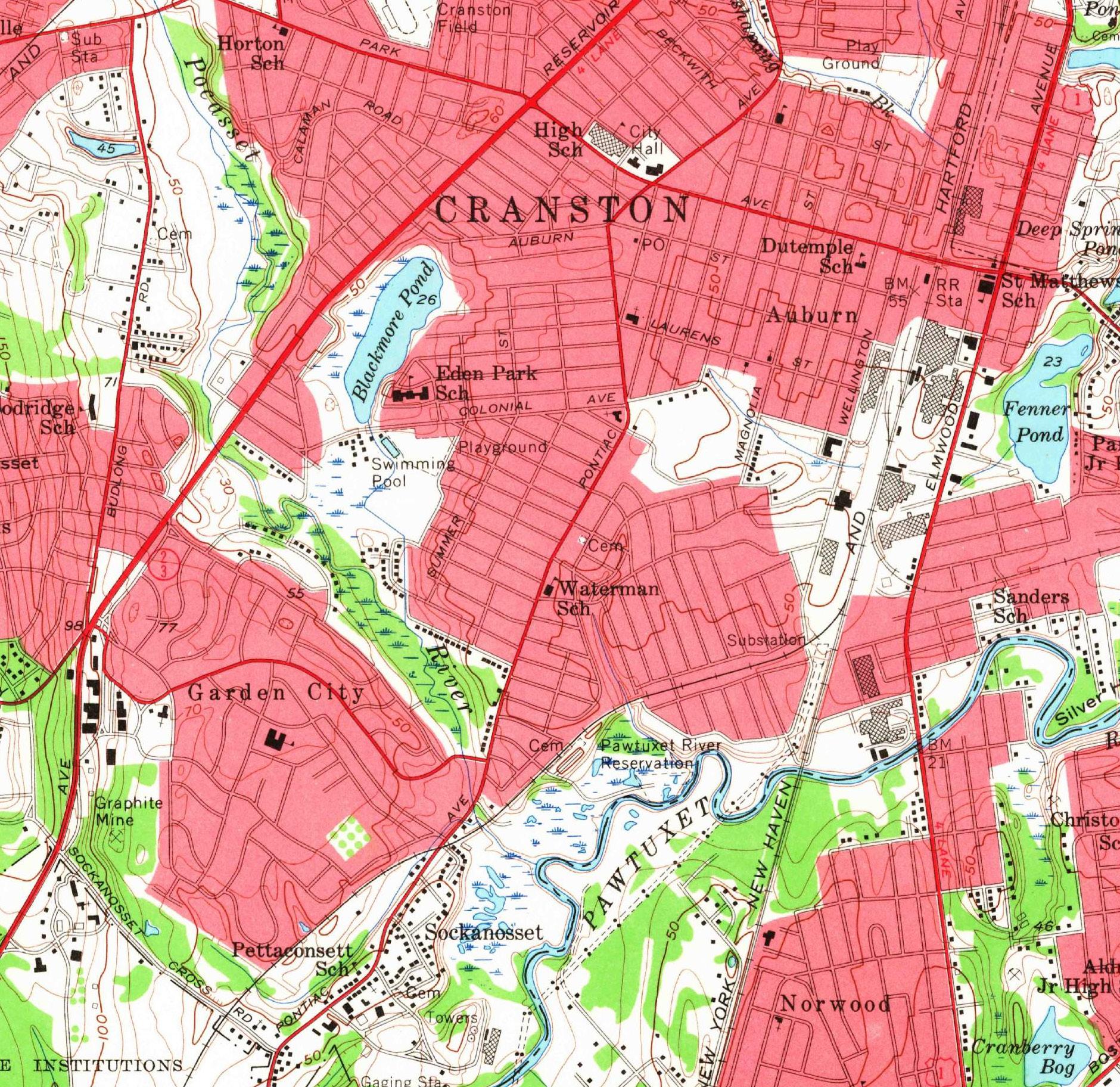
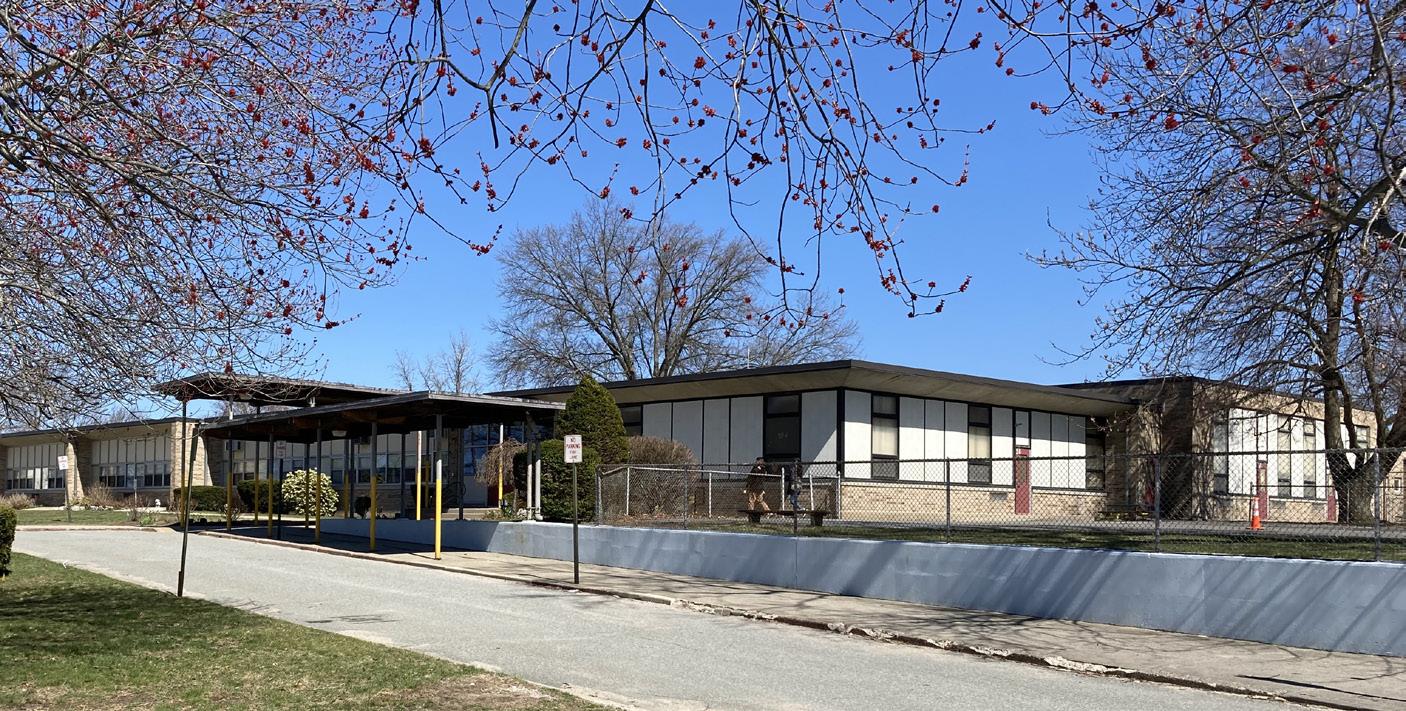
in the context of contemporary local and nationwide development, helping to uncover the ways that the neighborhood both mimicked and diverged from period trends. Its emergence was a direct result of an explosion of automobile ownership and its proximity to new infrastructure, including state highways (Route 2) and Interstate 95. Te plat’s layout was typical of contemporary suburbs in New England, where developments were ofen discontiguous and irregularly shaped as a result of historic property patterns. Tis forced developers to carefully consider street and plot layout, and sometimes resulted in atypical lots or roads. Garden City’s houses also followed traditional design idioms, such as Colonial Revival cupolas, brick or clapboarded gables, and sash windows, which were
TOP Detail of topographical map by the US Geological Survey, 1957. By the time this map was published, Garden City had been under construction for more than ten years. Note the neighborhood’s FHA-standard winding streets, in contrast to the earlier grid pattern of nearby Eden Park. The Eden Crest development is located south of Garden City School (the black U-shaped block at center). Although several houses in Eden Crest predate Garden City, it eventually adopted a curvilinear street pattern.
BOTTOM Garden City School (Providence construction firm H.V. Collins Company, 1952-53). Like many schools of this period, Garden City’s elementary school was oriented toward its neighborhood – discreet in scale and within walking distance for many students. It employed an International Style “finger plan” with classrooms opening directly into a courtyard. This style was easy to add on to, which the school quickly did in 1956. This photograph was taken by the author prior to demolition in 2021.
aligned with popular Federal Housing Authority (FHA) guidance. House and landscape design were strictly controlled by the developer through deed covenants and direct sales. In a 1956 article for the Providence Journal, N. Robert Melocarro (son of and successor to Nazzareno) succinctly describes Garden City’s design policy, stating: “Once or twice we’ve come across ‘young moderns’ who wanted to build a glass-house contemporary…so we simply refunded their purchase price.”
Despite the impulse to follow national trends, Garden City was relatively groundbreaking in Rhode Island for its integration of commercial, religious, civic, and residential planning. It was able to portend the consumer-driven culture of the 1950s by carefully integrating retail into its design – more cohesively than many contemporary developments, such as Governor Francis Farms in Warwick, Rhode Island, or Shopper’s World in Framingham, Massachusetts. Interestingly, the neighborhood also diferentiated itself with the construction of apartment housing: a level of housing density not ofen seen in platted subdivisions of this period.
All this is not to say that the American suburb –Garden City included – was a perfect idyll. From their start, postwar suburbs have been much maligned for decentralized “sprawl,” which today raises signifcant questions about long-term sustainability and carbon emissions. Postwar suburbs are also characterized by a willful abandonment of historic cities supported by government policy and incentives – and the simultaneous disenfranchisement of people of color
in pursuit of homeownership. Although Garden City did not have racially restrictive deed covenants, it did beneft directly from FHA funding and indirectly from Providence’s urban renewal projects, which perpetuated racial disparities throughout the state.
Despite these relevant critiques, there is no denying that America’s suburbs have shaped its landscape and built environment in immeasurable and long-lasting ways, and, as such, warrant more careful study. Recent statistics indicate that most Americans now live in suburban environments, and older suburbs have continued to evolve as centers of community despite popular tropes of uniformity. Tey have also been historically oversimplifed, as noted by historian Barbara Miller Lane in Houses for a New World (Princeton University Press, 2015).
From a technical perspective, determining a postwar neighborhood’s historic signifcance can be quite complicated. Typically, standards for architectural preservation in the United States have emphasized uniqueness and intactness as important factors in determining signifcance. However, postwar neighborhoods have an element of repetition, both within themselves and when compared to other developments. Tey also have a tendency to run up against questions of intact materiality – for example, in replacement of experimental mid-century building materials, or subsequent additions that obscure original scale and massing. Scholars such as Teodore Prudon have begun to provide some context to these questions; in Preservation of Modern Architecture (John Wiley & Sons, 2008), Prudon suggests that postwar neighborhoods, in many cases, should be viewed holistically and should focus on design intent and planning principles rather than individual buildings.
Because of its unique qualities within the scope of Rhode Island’s postwar development, PAL’s survey concluded that Garden City’s residential plat was

indeed eligible for inclusion in the National Register. If formally listed, this would place the neighborhood within the context of a cultural landscape, meaning that the totality of all its elements and their intactness – streetscapes, cohesive planning, house forms –give it tangible signifcance. Garden City is essentially the embodiment of suburban middle-class life in midcentury Rhode Island, and its infuence on subsequent local development is substantial.
Contrary to popular belief, a National Register listing does not restrict a homeowner’s ability to change structures or landscapes; it can only prompt review by a state historic preservation ofce under certain conditions where projects involve federal (and sometimes state) funding, licensing, or permitting. In the United States, only locally designated zoning ordinances and historic districts have the power to review design changes. National Register listings will not raise property taxes. So, what does this mean for Garden City’s future?
In essence, surveys such as those completed by the Public Archaeology Lab have importance beyond regulatory frameworks. Tey provide vital context to places where people live and work. Tey can help communities see their neighborhoods not just as an inevitable present-day outcome, but through a layered lens of planning, development, and social history. In our ever-evolving, fast-paced world, it is increasingly common to forget what places looked like ten years ago let alone ff y or one hundred years ago. Detailed surveys can provide a strong basis for understanding sense-ofplace, the tangible and intangible reasons why people enjoy where they live. In turn, a detailed survey can also inform sound development into the future. Tis is one of the integral purposes of preservation: not to suppress change, but to thoughtfully inform decision-making that impacts places and people. Garden City’s current residents are dedicated to their neighborhood because of its sense of community. It is certainly captured in winding streets, picture windows, and grassy landscapes; but it is also present in early morning laps around the shopping center parking lot, in curbside chatter, in smoking backyard grills, and in ice cream from Newport Creamery’s takeout window.
Detail of Providence Journal advertisement, October 24, 1948. Melocarro heavily promoted his newest development through local media, including an emerging market of television viewers. He often employed "The City Within A City" tagline to distinguish the development amid a sea of competitors.
Richmond Days, the town of Richmond, Maine’s, annual summer celebration, returned in 2022 with a Fabulous Fifties theme featuring poodle skirts, soapbox racing, and a Frank Sinatra impersonator. In truth, 1950s Richmond was not fabulous, although it would soon become famous. Its population of 2,000 had dwindled since the nineteenth century, most streets were unpaved, drinking water came from the heavily polluted Kennebec River, and the town held a large inventory of houses seized for nonpayment of taxes. The surrounding area was further burdened by the legacy of forest fires and abandoned farms.
Colonial settlement of the lower Kennebec region began in the early 1700s, and Richmond flourished in the next century. The shipbuilding industry that began on the Kennebec River in 1815 produced Richmond’s era of greatest prosperity and fostered the development of its rich architecture. Constructed for shipbuilders and sea captains, the town’s collection of Greek Revival and other fine buildings surpasses that of any other town in Maine of comparable size. These structures form the core of the 100-acre Richmond Historic District, placed on the National Register in 1973. As shipbuilding waned and then disappeared and Richmond’s next industry, ice harvesting, was superannuated by refrigeration, Richmond began its long decline.
It appeared that history had bypassed this venerable small town until a most improbable figure arrived, Baron Vladimir von Poushental, a Russian aristocrat who had escaped Russia in 1923. His love of duck
by JAMES M SCHIBANOFF An independent historian and passionate preservationist, James Schibanoff lives with his wife in Boston and the White Mountains.
hunting brought him to the Kennebec area in the late 1940s where he discovered that the topography and climate closely resembled central Russia and would appeal to Russian immigrants living in squalid urban areas throughout the United States. Opening a real estate company, he acquired abandoned farms and homes by the dozens and began to reconstruct the Russian world that had vanished with the revolution. He recruited former tsarist soldiers to Richmond and established Saint Alexander Nevsky Russian Orthodox Church, Maine’s first Russian Orthodox church. He further attracted colonists with extensive advertising in Russian-language newspapers. By the early 1960s, Richmond’s estimated immigrant population reached five hundred individuals or three hundred families, the largest rural Russian enclave in New England, a haven and cultural center for transplanted Russians of all sorts.
The influx of such a large group of Russian refugees who had survived some of the greatest calamities of the twentieth century, including World War I; the Russian Revolution and Civil War; Stalin’s forced collectivization, genocidal famine, and terror; and World War II infused the rural Maine town with a new rich and diverse culture. Originating from throughout the former Russian Empire, the colonists spanned Russian society, including peasants, factory
workers, soldiers, professionals, businessmen, artists, intellectuals, and even a princess. The émigrés left Russia in two waves. The first wave departed immediately after the revolution. Despising the Reds, they were known as White Russians. The second wave lived under the repressive Soviet regime until the upheaval of World War II; their behavior could be fearful, secretive, and distrustful. Their economic status, however, was quite uniform. Whatever assets they held in Europe had vanished. They now existed on Social Security or the few low-wage jobs in Richmond.
The Russians of Richmond achieved remarkable notoriety. During a four-decade existence, the colony was endlessly fascinating to the populace of Maine, eliciting three books, many magazine features, and countless newspaper articles, some of which circulated nationally. The news media documented the romance of old Russia in Maine, the stark contrasts between the Russian colony and its American neighbors, the ornate religious rituals and traditions, the abundance and richness of cultural exchanges, and the inevitability of its demise caused by the passing of the older generation and assimilation of the younger one.
Today, the Russians are all but forgotten in Richmond; the only physical remnants are the Russian church with an American priest and a small, mostly American congregation, and the distinctive Russian Orthodox crosses in the Richmond cemetery. Yet, an enormous legacy survives in the written records. Of the innumerable ethnic enclaves in America, rarely has one been so well documented. These colonists were unlike most immigrants of the period who led essentially anonymous lives, leaving little trace; when they died, their memories died with them. The Richmond stories are particularly valuable because of their multidimensional perspective; they range from brief anecdotes scattered in news articles to lengthy biographies in Robert Jaster’s Russian Voices on the Kennebec (University of Maine Press, 1999) to the historical fiction of Willis Johnson. Johnson was undoubtedly the most astute observer. Working as a journalist in Augusta, Maine, Johnson missed the ethnic diversity of his native Connecticut. Discovering the Russian colony, he wrote a feature article in 1968, most memorably describing a Russian-American teenager whose order of french fries and a soft drink in Maine’s only Russian restaurant presaged the
decline of the colony. For the next twenty years, Johnson immersed himself in the local Russian culture, culminating in The Girl Who Would Be Russian and Other Short Stories (Harcourt, 1982), fictional tales based on Richmond. Combining a journalist’s precision with a novelist’s sensitivity, Johnson was uniquely positioned to interpret the colony to the world.
The news sources preserve forever the facts surrounding the lives of the immigrants. The Gonschar family, having lost two sons in the Soviet Union, acquired a ramshackle farm unwanted by Americans, furnishing it with discards from the Richmond town dump. Former tsarist soldier Michael Kamishny achieved mythic status by walking ten miles to the Richmond village store and shouldering a 100-pound sack of beans back to his farm. Boris Dulkin, who lost his father and vast sheep farm in southern Russia, acquired a rundown farm without a barn or fences, plowing his land with a goat until he could aford horses. Yet, he was happy in a situation that most Americans would scorn. His feelings, reported in a Russian-American newspaper, were echoed by many Russian colonists:
“I arrived in the United States on April 4, 1950. I had no money, no belongings, but as I stood on the boat deck seeing the Statue of Liberty for the first time, I felt like a rich man.
I pray every day and thank my Lord for all these blessings—to be able to live in this free and wonderful country among kind, God-loving people, to be able to call it my farm, my land, my house. No one is trying to hurt me, no one takes things from me. What could I want more of life?”
Some immigrants lived in the US for decades before reaching Richmond. Galina Panko lived in Leningrad until World War II displacement brought her to the US in 1951 and to Richmond in 1971. She was so devastated by her husband’s tragic fate that she could not reveal the story of his nighttime
The Russians of Richmond achieved remarkable notoriety. During a fourdecade existence, the colony was endlessly fascinating to the populace of Maine, eliciting three books, many magazine features, and countless newspaper articles, some of which circulated nationally.

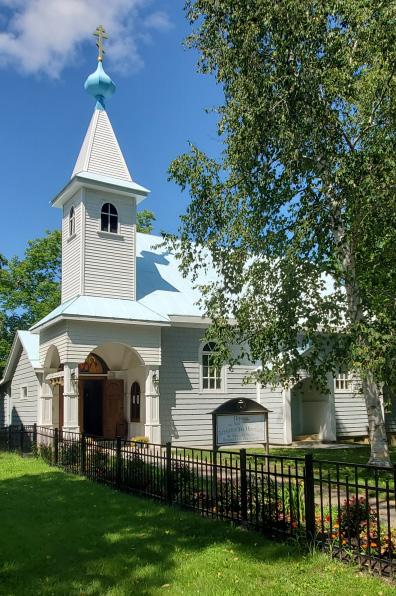

arrest and disappearance in the Gulag until the 1990s. Day Kokarev, a Russian soldier in World War I, developed a permanent tremor after surviving a bombardment. Following the war, he came to the US to attend a Russian-Baptist seminary. Unable to secure a congregation, he became a successful building contractor in New Jersey. Finding that the Richmond area closely resembled his native Siberia, he acquired the Greek Revival Captain James Carney House and fulfilled his dream of establishing a Russian-Baptist Church.
Willis Johnson’s short stories are a counterpoint to the upbeat news coverage. Johnson believed that among the immigrants Richmond produced little tranquility because “I think they brought a lot of bitterness of all they’ve been through.” In the story The Last Song of Exile, an older Russian couple befriends a young American couple (the Johnsons). The Russian man, suspecting that the Americans attacked him and murdered his family, spirals into paranoid violence. In The Ice Fish, the character representing Poushental is not a philanthropic nobleman but a devious, conniving landlord. The Russian artists who generously shared their talents at local colleges and festivals are represented by a haughty, aging ballerina (The Great Valentinova) who is disdainful of the local populace and anxious to leave. The Richmond townspeople, while respecting the newcomers’ diligence, resent the unpronounceable Russian surnames, the rudeness of speaking Russian in an American town, and the audacity of keeping backyard chickens. When a Russian beats a native to a parking space, the native exclaims, “We let you in this country…and this is how you treat us.”
The title character of Johnson’s book is Debbie Brown, a Richmond bank teller who decides to become a Russian known as Natasha. She buys a “bellyliker” (balalaika), imitates Slavic dress, and afects Russianaccented speech (“veening” for winning, “pliss” for please, and “tank you” for thank you). As most Russians were elderly, she foresaw that someday she would be the only Russian in town. Then, suddenly in the Russian cemetery, she is assaulted and the dream crashes. Her inability to become Russian is a metaphor for the famous Russian colony of tiny Richmond, Maine.
With the passing of the Russians, Richmond began the next chapter of its long life, and the Russians entered American history.
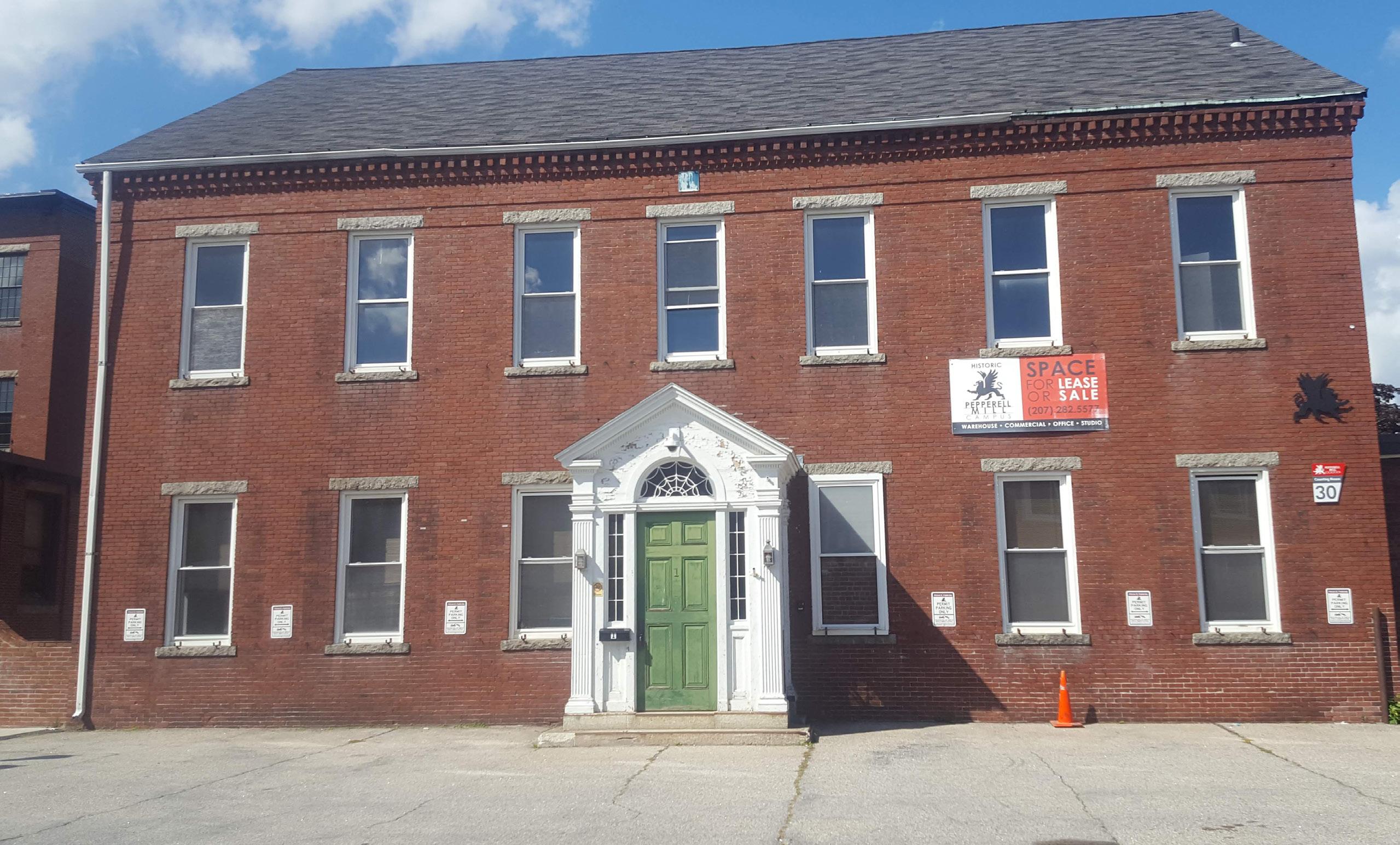
Claire Sadar is a journalist specializing in religion in the United States and Turkey. She is learning and events coordinator at the Knight Science Journalism program at MIT. More of her work is available at ClaireSadar.com.
Wedged between the tourist hot spots of Old Orchard Beach and Kennebunkport, Biddeford is a relatively unassuming former mill town on the Maine coast. For those in the know, however, there are places in Biddeford that make it worth a visit—the oldest restaurant in Maine, a fantastic brewery in the former mill building, and one of the oldest Muslim sites of worship in the United States.
In the early twentieth century, Biddeford’s Pepperell Mill was a magnet for Eastern European immigrants. Greek Orthodox and Albanian Muslim immigrants settled alongside earlier immigrant groups like French Canadians, creating a vibrant
and religiously diverse community. The Albanian Muslim millworkers used the second floor of the counting house on the edge of the complex as a place for communal worship—in other words, the space became a temporary mosque. This historic building (pictured above) is still intact, though it stands vacant, its important place in American religious history unmarked and largely forgotten.
Biddeford is just one of the thousands of places across New England that in the nineteenth and early twentieth centuries was home to diverse populations hailing from the far eastern end of the Mediterranean—territories that were then or recently had been ruled by the Ottoman Empire. These groups
were linguistically and religiously diverse, yet their common cultural ties to the Ottoman Empire meant that their early life in New England often brought them in contact with others from the same region. Armenians, Greeks, Arabs, Turks, Kurds, and Sephardic Jews all settled in New England, a collective inmigration of thousands.
Yet, due to industrial decline, urban renewal, and cultural assimilation, the stories of these New Englanders have often failed to be preserved.
The primary marker of identity in the Ottoman Empire was based on religious afliation. There were four millets, or religious communities, that Ottoman subjects could belong to—Greek Orthodox, Armenian Orthodox, Muslim, and Jewish. The identity of Ottoman non-Muslims in particular was shaped by centuries of living under this system. Greek Christians, both in the empire and its successor states, including Greece, therefore saw their language and church as markers of their distinctive cultural identity.
However, in America the early nineteenth-century Greek immigrants found themselves distinguished not by contemporary cultural and political realities, but by a romanticized notion of their ancient ancestors. These early immigrants, some of whom were orphaned children, did not form communities with other Greeks or Ottomans. Many converted to various strains of Protestant Christianity, married non-Greeks, and their children became assimilated within the larger population.
In the 1890s, a combination of war between Greece and the Ottoman Empire and an economic downturn exacerbated by crop failure in the Peloponnesian Peninsula drove many ethnically Greek men from both the state of Greece and the Ottoman Empire to immigrate to the United States. Over the next thirty-plus years, hundreds of thousands of ethnic Greeks would arrive in the United States. Tens of thousands moved to Maine and Massachusetts to work in the textile industry.
This wave of Greek immigrants maintained their Greek identity and culture through faithfulness to the
Orthodox Church, the creation of ethnic enclaves, and marriage to Greek women. During the first decades of the twentieth century, the mill town of Lowell, Massachusetts, was home to the third largest Greek population in the United States, after New York City and Chicago. Today, Massachusetts has one of the highest concentrations of people claiming Greek ancestry in the United States.
Unlike their Greek neighbors and co-workers, the impact of the Turkish immigrants who came to New England was more fleeting. Their numbers were

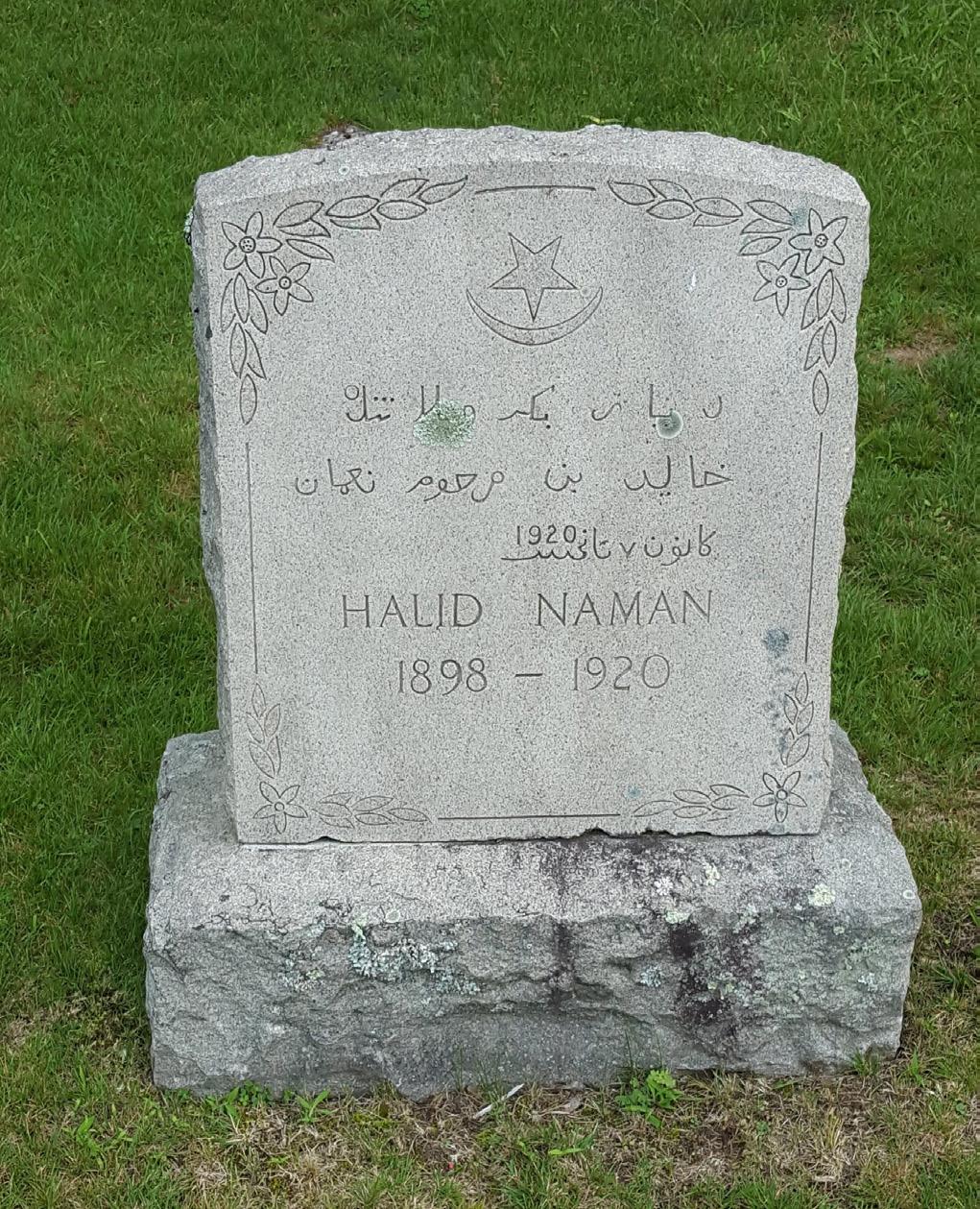
much smaller than other groups coming from Ottoman and former Ottoman territories and concentrated in one or two New England towns— a few thousand as opposed to tens or hundreds of thousands.
The largest group by far was in Peabody, Massachusetts, and the nearby cities of Salem and Lynn. Almost to a man (and they were basically all men), they came to work in the leather industry—a dirty, difcult line of work. Estimates of Turkish immigrants in Peabody and the surrounding area during the second two decades of the twentieth century range from six hundred to two thousand. Their concentration was significant enough that when Ottoman Turkish journalist Ahmet Emin Yalman, then a student at Columbia University in New York City, visited Peabody in 1911 he noted with some surprise that there were signs in both English and Turkish directing passengers when he disembarked his train.
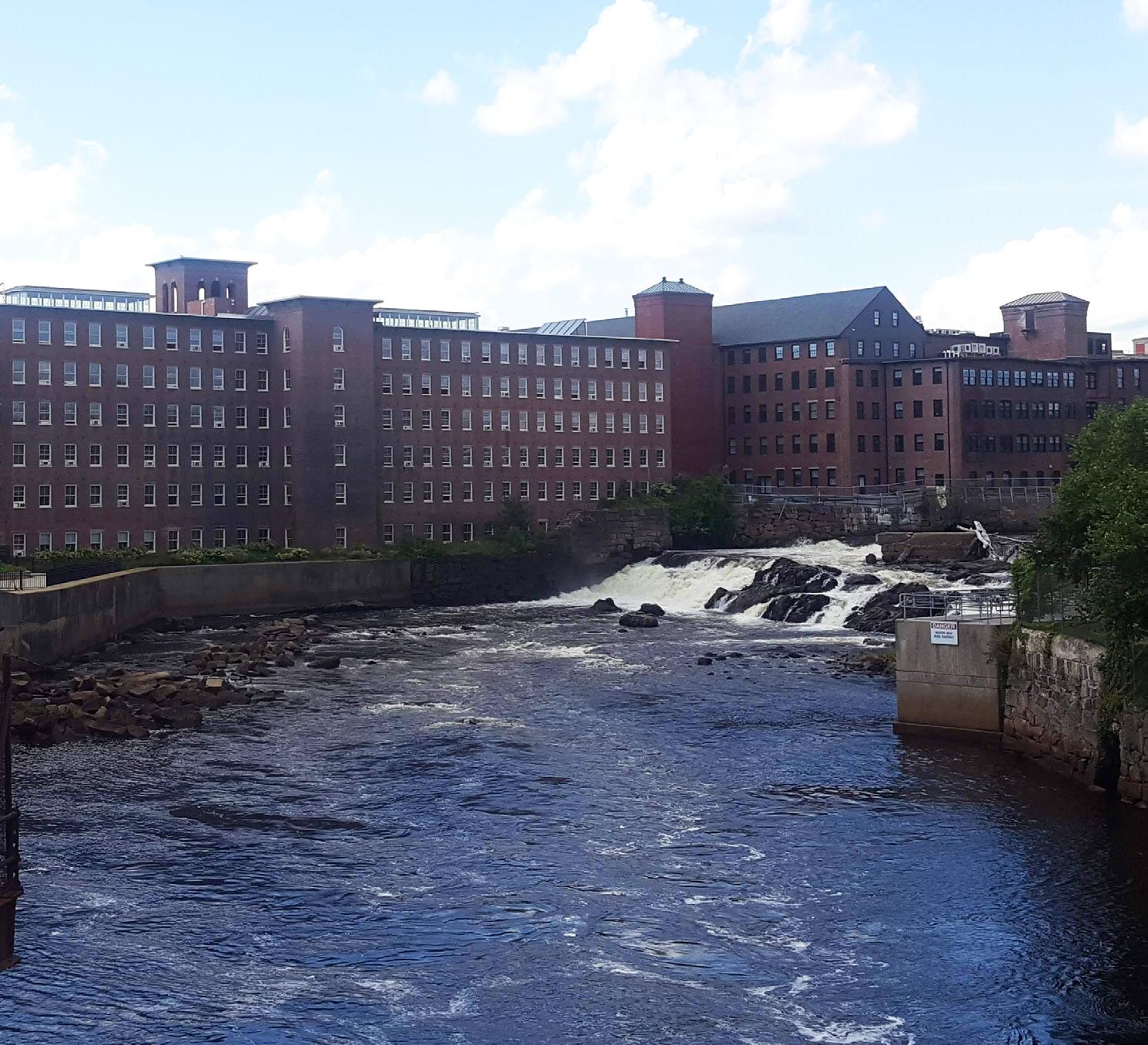
the overwhelmingly Christian United States, as well as the Turkish war for independence, likely contributed to the unusually high return rates of Turkish and Kurdish immigrants.
Some of these Peabody leather workers were also Kurdish, though it is impossible to know how many.
Although the Ottoman immigrants had various ethnic backgrounds, on arrival in North America they all became known as “Turks.” This designation did not reflect a strictly ethnically defined group but rather continued the long-standing Western tradition of grouping Ottomans and Muslims together. An individual’s ethnicity is nearly impossible to identify based on surviving records either. Turkish and Kurdish immigrants had virtually identical naming practices, and lived side by side in the same cities, towns, and villages in Anatolia.
In the decades following World War I, approximately eighty to ninety percent of Turkish and Kurdish immigrants to the United States returned to their places of origin. It is important to note that permanent settlement was not necessarily the goal of any of the new immigrants to America during the early twentieth century. Immigrants traveled back and forth between their hometowns and the United States and as many as thirty to forty percent ultimately moved back to their homeland permanently. However, the religious and cultural diference between Ottoman Muslims and
Despite sensational headlines in the local papers, Turkish and Kurdish immigrants were more likely to find comfort in the company of other peoples from the Ottoman Empire than to be in conflict with them. The Anatolian Muslims who lived in Peabody shared boarding houses and frequented some of the same leisure establishments as the Christian Greeks and Armenians who also had immigrated to Peabody.
The small number who did settle in New England, like the earliest Greek immigrants, assimilated. A handful married women from other immigrant communities and a few of their children wrote fascinating and important memoirs about their lives and the lives of their Turkish fathers (see Turks in America: The Ottoman Turks Immigrant Experience by Frank Ahmed, Columbia International, 1993).
These Muslim Ottoman immigrants left little lasting physical impact on the town where they were once so prominent, with one exception— Cedar Grove Cemetery outside of town. There, scattered among the graves of other immigrants, you can find melting marble and overgrown granite stones carved with Muslim names, bodies oriented toward Mecca.

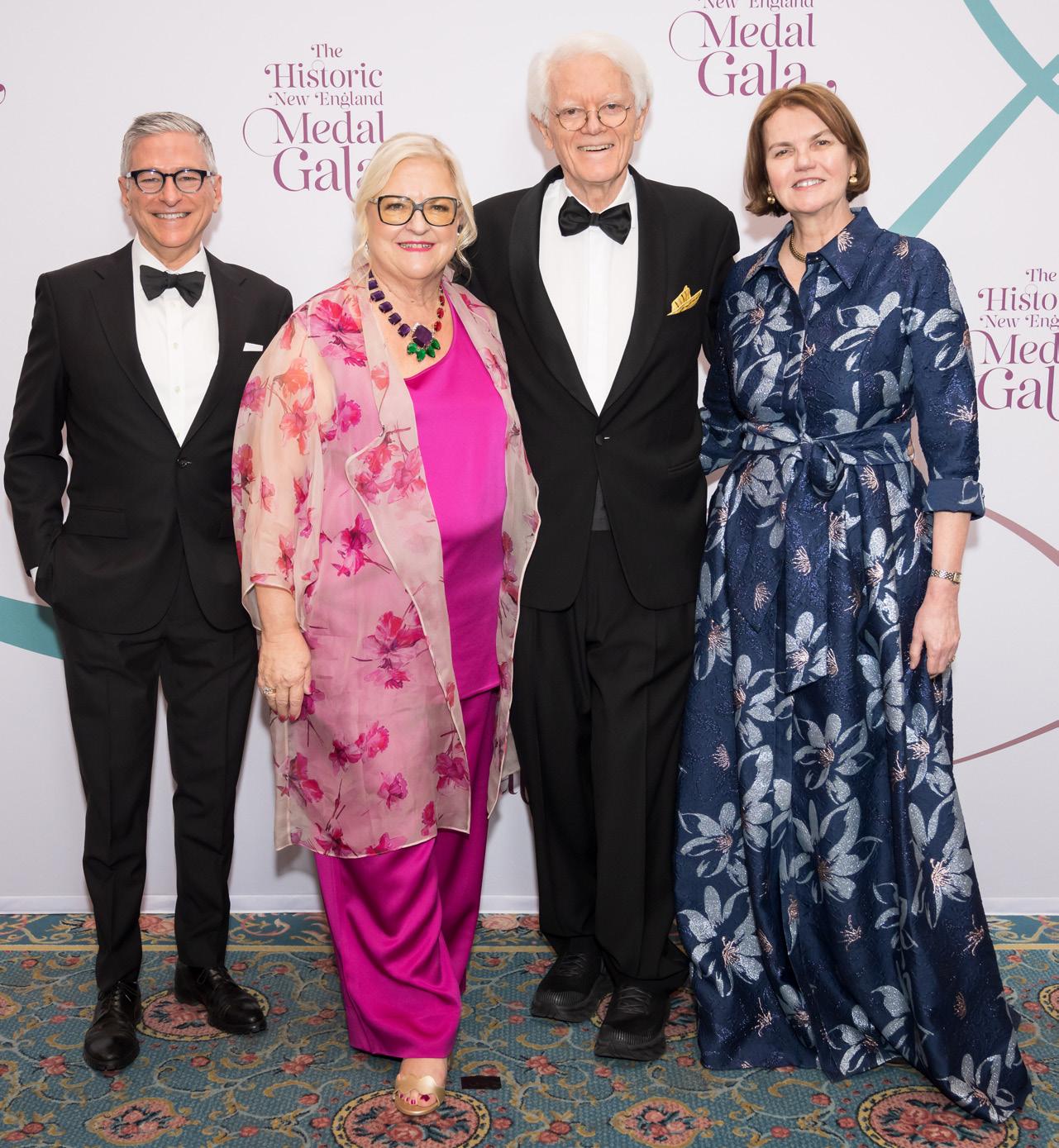
President and CEO Vin Cipolla, Chair of the Board of Trustees Deborah Allinson, Peter S. Lynch, and Janina A. Longtine MD.
A lifelong New Englander, Nina is a tireless advocate for preservation and social causes and has enjoyed a long and distinguished medical career in molecular genetic pathology in Boston, New York City, and New Haven. She has been devoted to education, the arts, and many other philanthropic causes and is an avid collector of American Impressionist paintings, especially paintings by women artists of the Boston School.
Nina served as a Trustee at Historic New England for twelve years, spending five of those years as Chair and Vice Chair during which she led the organization forward on building visibility, expanding programs, growing audience, and becoming a more public-facing institution. Still actively involved, she has been a member of multiple governance and gala committees. In 2018, Nina was named Trustee Emerita in recognition of her long history of outstanding service to Historic New England, and we were excited to honor her at this year’s celebration.

Historic New England is delighted to recognize Janina A. Longtine MD and Peter S. Lynch as this year’s recipients of The Historic New England Medal. Established as the organization’s most prestigious annual award, The Medal is bestowed upon individuals whose philanthropic and civic leadership and generosity have made a significant impact on saving and sharing history and advancing the importance of historic preservation. The Medals were awarded at the second annual Historic New England Medal Gala on March 11, 2023.
Peter was first introduced to Historic New England in 1975 when Fidelity chief executive Edward C. “Ned” Johnson 3d encouraged his young associate to join the board. Peter and his wife, Carolyn, deepened their interest in historic preservation and developed a passion for collecting, including American folk art. The couple established the Lynch Foundation in 1988 to provide resources and support to nonprofit organizations in the greater Boston community.
Peter is considered one of the most successful money managers in Wall Street history, managing the Magellan Fund at Fidelity. He served as a Trustee and on the Investment Committee at Historic New England for nearly twenty years sharing his financial acumen. His guidance advanced the growth of the endowment by tenfold and during his years of service the easement program was established, both leading to a substantially stronger organization. We were delighted to honor him during this year’s celebration.
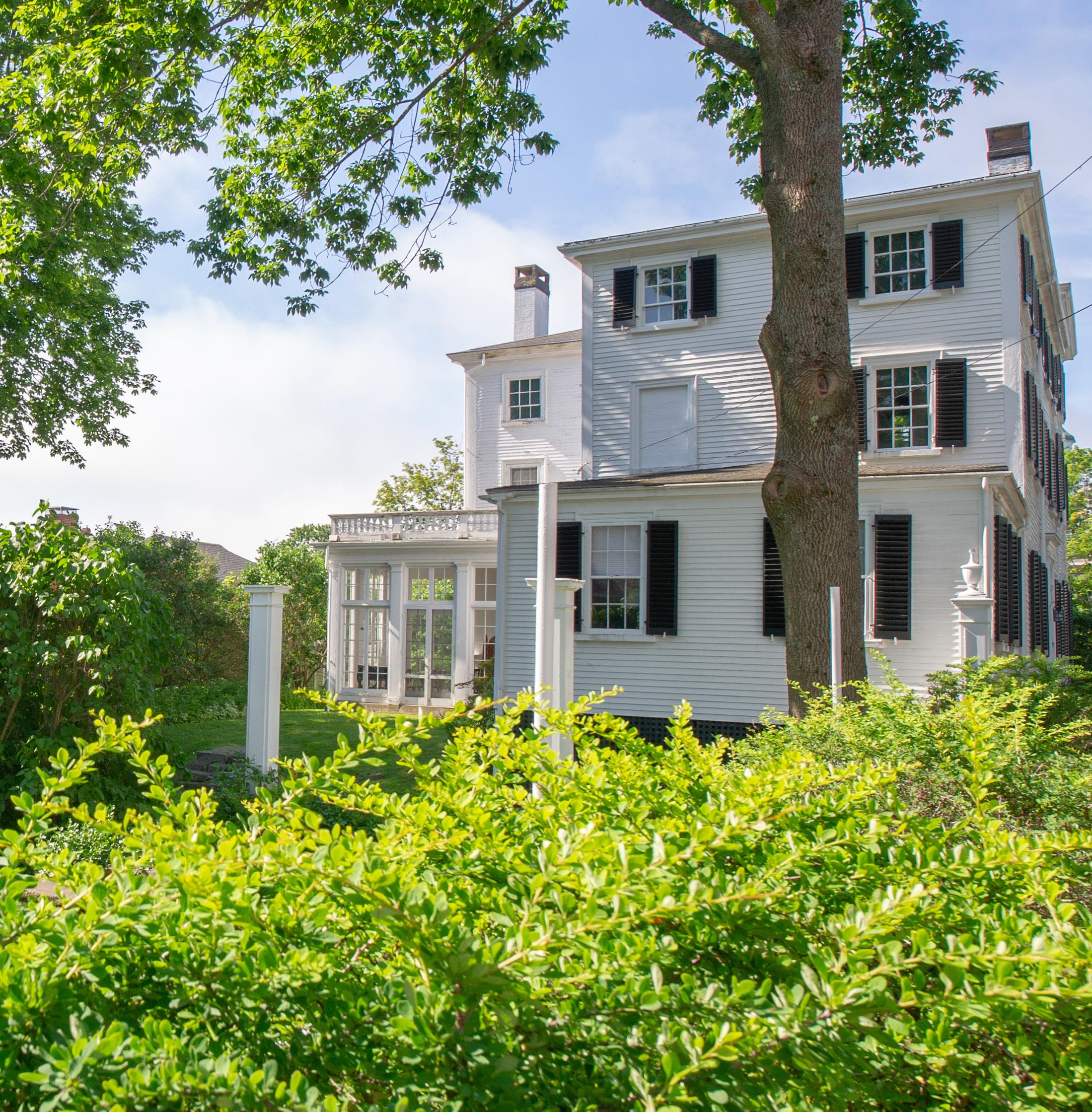
The story of Nickels-Sortwell House is the story of Wiscasset, Maine, from the early nineteenth century to today.
In 1807 when shipping magnate William Nickels built his imposing home on the corner of Main and Federal streets overlooking the harbor, the town was a thriving seaport prosperous enough to support fve downtown lodging establishments. Wiscasset’s location on the Sheepscot River made it a hub of maritime activity with a need for both permanent residences and temporary lodging for people arriving and leaving by ship.
by PEGGY KONITZKY Midcoast Maine Site ManagerTe Embargo of 1807 and the war that followed led to the end of Wiscasset as a center for shipping. Financial hardship followed and businesses closed, including most of the lodging houses. Shipping families like the Nickels lost their fortunes.
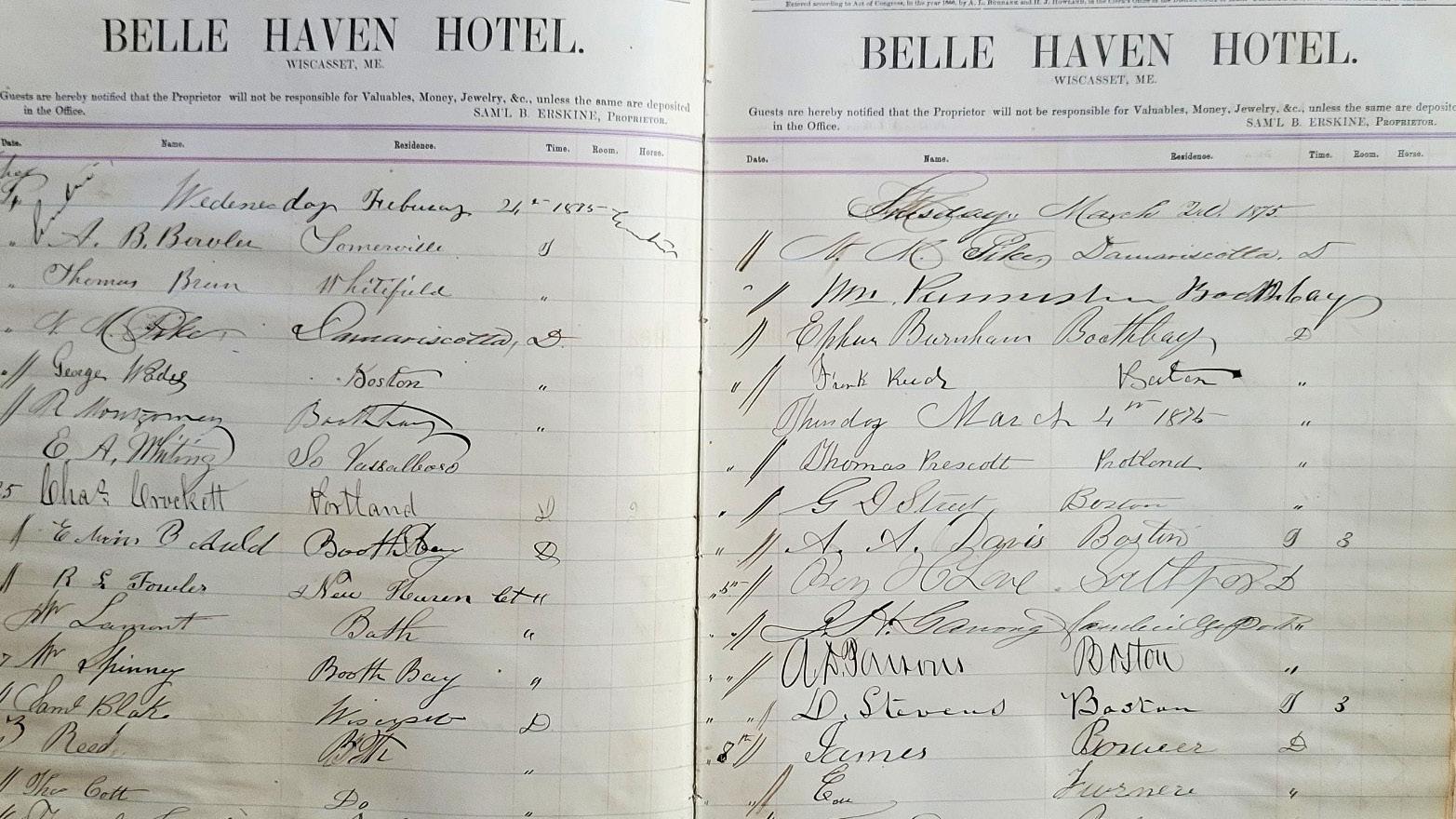
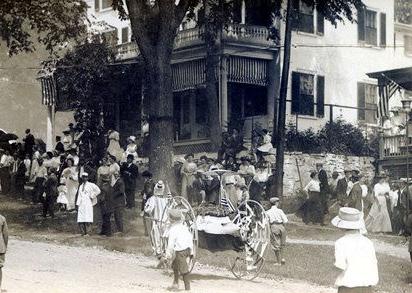

Afer William Nickels’s death in 1815, his vacant mansion was rented by the Turner family and reborn as Turner’s Tavern. Cornelius Turner and his wife, Mary, ran the inn for forty-four years while raising nine children in the house. Te corner location was ideal. Whittier Tavern across the street had been successful since 1764, but the Turners’ new hotel could ofer elegant spaces and more bedrooms.
Mid-nineteenth-century changes in technology
Pages from the 1875 Belle Haven guest register form the backdrop as Gertrude Sortwell, in her white hat, watches the 1900 Fourth of July parade from her front steps, and William Wilcockson and friends stand in front of the newly restored Belle Haven in 1870.
and increased industrialization had created new businesses in the area. Wiscasset’s location on the main coastal road made it a logical stopping point for both business and leisure travelers on their way Down East or to points south. Travel also increased due to the steady stream of visitors to the neighboring Lincoln County Court House. Limited transportation options meant most people had to stay overnight to connect to the next stagecoach, boat, or later, train. In 1870, afer the deaths of Mary Turner and her sons, the hotel was purchased by William Wilcockson, an Englishman who renamed it the Belle Haven. He spent so much money renovating the property that he was forced to sell it a year later. Te hotel continued to be known as the Belle Haven for most of its years despite changing hands several more times. It catered to professional and working people, and records show that it was a comfortable place for women traveling on their own. An 1875 guest register shows clerks, a policeman, farmers, fshermen,
attorneys, accountants, shipyard workers, stationers, merchants, dressmakers, and thirteen members of Te Metropolitan Teater group. Miss Josie Mansfeld, a young Irish domestic servant, and E.B. Reed, a clairvoyant, proudly signed their names. Guests came from nearby towns, cities across the US, and as far away as Liverpool and London. Some were regulars. In 1881, the Lilliputian reported that the owner, Mr. Merrill, accepted a booking for sixty people from “Mr. Swain, the Rosicrucian Spring man of Boston.” Tat certainly would have flled the then ffeen-bedroom house.
We do not know the names of those who worked at the hotel other than the owners. Most would have been local day help, but an 1878 Seaside Oracle newspaper revealed that staf were also recruited “from away” and included people of color. “Mr. J.B. Merrill, Proprietor of the ‘Bell Haven’, returned from a southern trip… bringing with him some good things from the Norfolk market and two colored servants for his house.”
Local connections to the house deepened over time. Te hotel became a very desirable place from which to watch circus and Fourth of July parades going through town. Helen McLaughlin, who was a child in Wiscasset in the 1870-80s wrote of one parade, “A wire rope (was) stretched between the Belle Haven & Captain Rundlett’s house, and a man in tights & spangles, balancing a pole … (walked) across, followed by a woman in a short spangled skirted dress who carried a small parasol. Crowds … gathered and afer the act, the hat was passed.”
Te house, which had been a hotel for eightyfour years, became a beloved fxture of Wiscasset’s downtown, which led the Sortwell family to donate it to Historic New England. Te Sortwells purchased the property in 1899 as their summer home as Wiscasset’s desirability as a tourist destination continued to grow. Nickels-Sortwell House opened as a museum in 1958.
Today, the house once again welcomes overnight guests. In 2018 Historic New England began ofering visitors the opportunity to spend the night at NickelsSortwell House in vacation rental accommodations located in the large ell overlooking what is ofen called “the prettiest village in Maine.”
The Nickels-Sortwell House three-bedroom apartment with eat-in kitchen and living room makes an attractive home base for families or groups traveling together. The Nickelses' original kitchen (with modern amenities) shows changes in cooking technology over the centuries. The downtown location is perfect for walking to the many eateries, boutique shops and galleries, and historic sites, including Historic New England’s Castle Tucker.
Wiscasset is beautiful in every season and offers cultural and family activities year-round. For more information on renting NickelsSortwell House for your next vacation, visit historicnewengland.org/property/nickelssortwell-house.
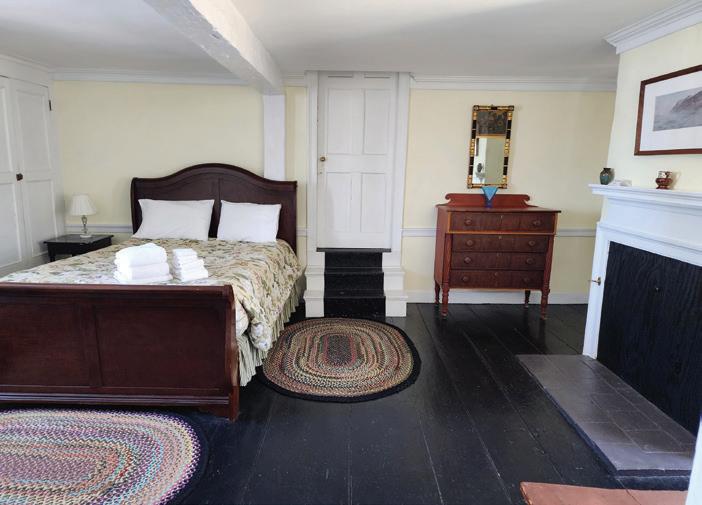



 by MADISON VLASS and TRICIA PEONE Ph.D.
by MADISON VLASS and TRICIA PEONE Ph.D.
As Newbury Site Manager, Madison Vlass is responsible for operations at Historic New England's Newbury, Massachuse s, properties. Tricia Peone is New England's Hidden Histories project director at the Congregational Library & Archives in Boston, and a former Historic New England Recovering New England's Voices research scholar.
Between land and sea lies a unique environment, a permeable barrier that guards one of the most ecologically diverse habitats on earth. It is no wonder that humans have always been attracted to coastal salt marshes. These tidal meadows may seem like mud and grass, but they have served as one of coastal New England’s most important resources for thousands of years. Today, though for wholly diferent reasons, we are as dependent on them as our ancestors were.
The Great Marsh on the Massachusetts North Shore, which stretches over 20,000 acres and supports hundreds of plant and animal species, is the largest in New England. Several Historic New England properties are situated on it, including Spencer-Peirce-Little Farm in Newbury and Cogswell’s Grant in Essex. The people who lived on these border lands, from Indigenous family groups to English colonists, were attracted to the area because of the access to fishing, hunting, and clamming that the coast aforded. The salt hay, which grows naturally on the marshes and replenishes itself annually, provided seemingly endless fodder and bedding for livestock. With such a rich natural resource, reliance on the marsh turned into exploitation. From employing enslaved labor for hay cutting to manually
A view of the salt marsh, Newbury, Massachusetts.

altering the landscape with ditches and embankments, the Great Marsh has been manipulated and distorted by human hands over the centuries. Today, our communities are at risk of significant sea level rise and the barrier between land and ocean is dying because of human impact.
The Great Marsh is part of the ancestral lands of the Pawtucket and the closely related Pennacook people. These semi-autonomous family groups had settlements or villages throughout the area that is now called the Massachusetts North Shore. They migrated seasonally and used the land according to the resources available. The salt marshes provided easy access to abundant food sources, ranging from fish and shellfish to waterfowl and game. The English colonists who arrived in the early seventeenth century settled along the coast to take advantage of those same resources and, in doing so, forced out the Indigenous people.
The salt meadows are dominated by three varieties of grass. Black grass (Juncus gerardi), thatch (Spartina alterniflora), and the soft, feathery salt hay (Spartina patens).
Many of the early colonizers brought herds of cattle to support their new settlements. The plentiful salt hay provided grazing material that was readily available. It did not require any cultivation and the land was cleared. Because of this, many viewed the salt hay as a natural privilege, or their God-given resource. Beyond grazing, they found other practical ways to use the marsh plants. Thatch grass was used for insulation in and around the walls of houses and sometimes for roofing material. Timber-framed houses would have
BELOW Working
was dangerous and horses and people could easily get stuck or sink into the marshy, muddy ground. To combat this, bog shoes like this one displayed on the pung in the SpencerPeirce-Little Farm barn were developed to help distribute the weight of large animals.

hay stufed between boards and covered with lime and clay to keep out drafts. The grasses also were used as packing material, as mulch for agricultural fields, and provided stufng for mattresses and pillows.
Haying and mowing were labor-intensive activities done by hand with scythes for centuries. Harvesting happened in late summer when the bugs and high heat made it a brutal job. After it was cut, the hay would be stacked into large, carefully crafted mounds on top of a staddle, a series of wooden pilings in the marsh that allowed hay to be piled above high water, safe from the twice-daily tide. When possible, the hay would be loaded into flat-bottom barges called gundalows
to be transported by river. If a boat was not easily accessible, the iconic hay piles studded the landscape until winter froze the ground. As this point, the early New Englanders used pungs, sleighs on curved wooden runners that allowed horses to pull wagons over the marsh without sinking, to collect the many tons of hay and bring it back to be stored in the barn.
Recent research has revealed records that show enslaved people in Newbury threshing, mowing, and stacking salt marsh hay as well as driving livestock out to graze on Plum Island. In a 1684 court case involving a dispute over salt marsh hay on Plum Island, witnesses included an enslaved man of African descent called Chuza, who testified that he had “set up a rick of hay of seven loads upon a staddle of Mr. Dole’s by a creek side at the end of a beach that runs into Rowley bounds, all of which was upon Mr. Kent’s meadow.” Richard Dole, of Historic New England’s Dole-Little House in Newbury, was involved in several court cases involving the purchase of salt marsh land on Plum Island.
The land was considered so valuable that the town of Newbury petitioned the General Court for rights to the entire island, but the General Court’s decision was to split the island among the towns of Newbury, Ipswich, and Rowley. Plum Island was both privately and publicly owned. Common areas could be utilized by white Newbury residents, and enslaved men like Chuza were sent out to stack hay.
In addition to enslaved labor on the salt marshes, in at least one instance an enslaved person was sold for this land. A deed signed in December 1692 between Peter Cofn and Dole documents an unnamed enslaved woman exchanged for a parcel of salt marsh on Plum Island. While we don’t know anything else about this woman outside of the deed, we do know that Dole enslaved three women who were recorded in his will as Grace, Lucy, and Betty—one of them may
have been the woman traded for land. In the deed, Cofn (who was married to Dole’s daughter Apphia and was the son of Tristram Cofn Jr. of Historic New England’s Cofn House) exchanged a human being for one-eighth part of Dole’s salt marsh on Plum Island, which stretched between Newbury and Rowley.
This document connects three Historic New England sites to the history of slavery in Newbury as it is signed by members of the Cofn and Dole families, and by Daniel Peirce Jr., a Justice of the Peace who owned Spencer-Peirce-Little Farm. We can also read the significance of the land—and the salt marsh in particular—in this record of a woman’s enslavement. In this period, enslaved people in New England were typically sold for money or inherited as property through wills; a direct exchange by enslavers for land was unusual.
At Cogswell’s Grant in Essex, south of Newbury, a salt hay barn that was built c. 1719 has survived for more than three centuries. The barn was originally built to store salt marsh hay harvested along the


nearby Essex River. Here, too, historical records tell a story of enslavement that, although documented, is largely invisible on the landscape today. The Cogswells enslaved several people at the farm. Their names were recorded in Elizabeth Cogswell’s 1723 will as Jack, Nell, and Genne. The records don’t tell us much about them, but they do note that Jack was a person of African descent, while Nell and Genne were Indigenous. Nell and Genne may have come to Cogswell’s Grant as captives from other parts of New England and been sold into servitude and slavery by government ofcials as a profit of warfare in this period.
Elizabeth’s son, Jonathan Cogswell Jr., also enslaved three people of African descent at the farm—Titus, Adam, and a woman whose name was not recorded. They are described as property in Jonathan Cogswell’s 1752 estate inventory and valued along with salt hay, a fishing boat, and livestock. Their forced labor would have included agricultural work such as stacking hay harvested from the salt marsh and storing it in the barn. Cogswell’s personal estate, including three enslaved people, was valued at £700, and his real estate, including his dwelling house, barn, and 140 acres of upland and salt marsh was valued at £1680.

The market for salt marsh hay was thriving in coastal areas through the end of the nineteenth century. In 1840, the town of Newbury recorded nearly 3,000 tons of salt hay were cut on the town’s 3,800 acres of salt marsh. In 1875, Essex County produced 11,870 tons of salt hay valued at $116,531, the most by far of any other county in Massachusetts.
Coastal farmers have been manipulating and altering the marsh landscape since they encountered it, and their actions have had an impact on the vitality of the ecosystem. Town orders in the seventeenth century prioritized clearing land for grazing and pastures and encouraged the killing of wildlife such as wolves and crows. Later in the eighteenth century, the General Court finally had to ban the grazing of livestock on Plum Island because of destruction and erosion. In the nineteenth and twentieth centuries, many New England salt marshes were dredged, ditched, or filled in. The man-made ditches acted as channels for tidal water runof, helping drain the marsh, and over the years they became historic boundary lines dividing individual properties. The natural habitat of the grasses shifted, and the ground dried out between tides, which increased the hay yield and made the work safer and more efcient.
The Great Marsh is just as valuable today as it has been historically and needs our help to survive.
The marsh, however, depends on a delicate balance. It is resilient, but it came to a point when it could not recover on its own from the constant scarring. In the nineteenth century, the value of salt hay began to decline and by the early twentieth century it was only being used as agricultural mulch. The tidal plane was looked on as a wasteland and breeder of greenhead flies and mosquitoes. In the 1930s, the Civilian Conservation Corps significantly enlarged the ditches to increase drainage and to stop mosquito production. Roads were built through the marshes which halted natural water flow and increased development led to high levels of pollution. This had led to an increase in invasive plants and a decrease in the natural species that call the marsh home.
The Great Marsh is just as valuable today as it has been historically and needs our help to survive. As we look at the potential efects of climate change, the natural barrier of the tidal marshes becomes one of

the greatest assets of coastal communities. It bufers against flooding and storm surge and makes coastlines more resilient against erosion and sea level rise.
In 2019, Historic New England partnered with Middlebury College to study the threat of sea level rise on our Newbury properties. The report found that Spencer-Peirce-Little Farm’s landscape is in danger of being drastically altered by tidal flooding over the next century. However, the seventy-or-so acres of salt marsh that serve as the border between farm and ocean could help mitigate this vulnerability if kept healthy. We respect the cultural history of the area and continue to work with a tenant famer to mow the salt hay. This is done with modern machinery and methods that are far less impactful than the ditching of the nineteenth and twentieth centuries. This also helps manage our greatest challenge – invasive plant
encroachment. Species such as phragmites and pepper weed have already consumed large swaths of the Great Marsh, taking advantage of the disruption of natural tidal flooding. Protecting this unique environment can only be done through the cooperation of the communities and organizations that rely on this natural bufer zone.
As stewards of history and culture, Historic New England is dedicated to protecting natural landscapes and the experiences of the people who used them. Each season, we find new ways tell the unique history of salt haying while recognizing the exploitation of human labor and natural resources that made the crop profitable. The Great Marsh has supported thousands of years of human habitation and with thoughtful and careful protection, it will continue to do so.

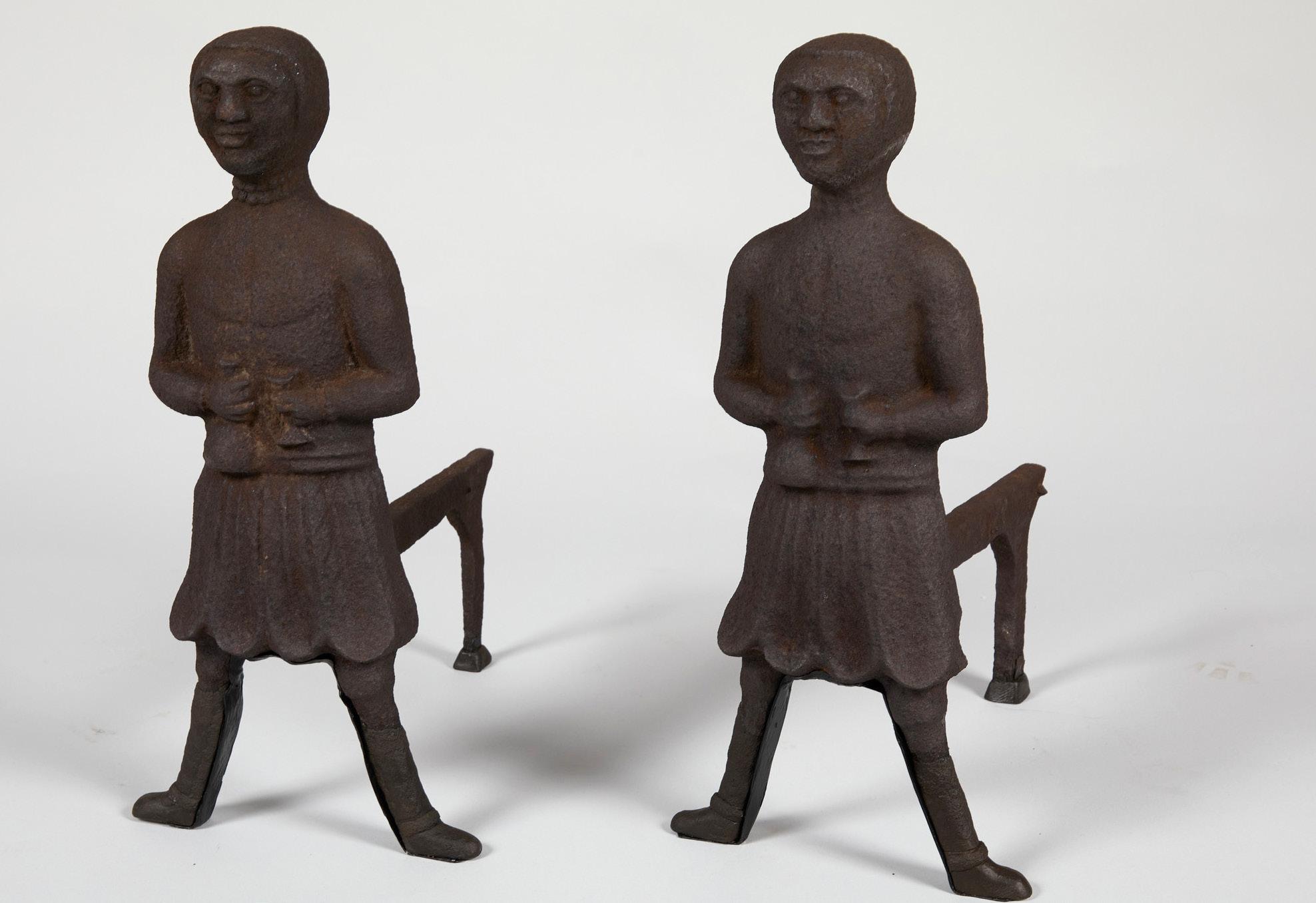 by KAREN BISHOP Mellon Conservation Fellow ERICA LOME, Curator HANNAH SOUCY, Beauport, the Sleeper-McCann House, Guide
by KAREN BISHOP Mellon Conservation Fellow ERICA LOME, Curator HANNAH SOUCY, Beauport, the Sleeper-McCann House, Guide
When Henry Davis Sleeper designed the Linebrook Parish Room at Beauport, in Gloucester, Massachusetts, his intention was to create a romanticized early American interior. His collection of seventeenth- and eighteenth-century objects did most of the heavy lifting, though the arrangement epitomized Sleeper’s adherence to “the gospel of beauty” in his creation and decoration of Beauport.
In the hearth of this room, Sleeper installed two andirons depicting enslaved African men, each holding the neck of a wine bottle in one hand and a wine glass
and
in the other. The figures wear grass or palm frond skirts, with stockinged legs and bare torsos. Around their necks and ankles appear to be double-stranded necklaces and bracelets, perhaps adorned with beads or pearls, but they are more likely slave collars and manacles.
Guides at Beauport have recently begun addressing these andirons on their tours, sharing with visitors how Henry Davis Sleeper incorporated antique objects depicting racist or harmful imagery into the interiors of his home, a not uncommon tradition among collectors, antiquarians, and decorators in the early twentieth

century. Similar objects in other Historic New England interiors draw negative associations to histories of enslavement, violence, and oppression against marginalized groups. These objects challenge Historic New England staf to reassess the stories shared at our properties.
The recent conservation treatment to care for these andirons by Mellon Conservation Fellow Karen Bishop created an opportunity to reconsider these objects from diferent perspectives. In this article, Bishop shares the process of restoring the deteriorated objects using modern materials. She is joined by Curator Erica Lome, who explores the origins of these andirons and provides context for their creation and consumption in the eighteenth century. Lastly, Guide Hannah Soucy ofers an interpretation of these objects within the larger context of Henry Davis Sleeper's collection at Beauport.
Karen Bishop, Mellon Conservation Fellow
When the andirons were brought into the conservation lab for treatment, the level of deterioration was not only visually distracting but dangerous for the objects. Most of the legs had corroded, the result of cast iron being in contact with the cool, moist ground of the fireplace. The heavy, disfiguring rust was actively flaking and the figures were at risk of losing more of their features. The goal for treatment was to preserve the andirons and restore the deteriorated legs.
The first step was to stabilize the metal. This was done by using a chemical process which converts active corrosion into a passive layer that also acts as protection. Scaling, flaking corrosion cannot be reattached, but the remaining surface can be treated,
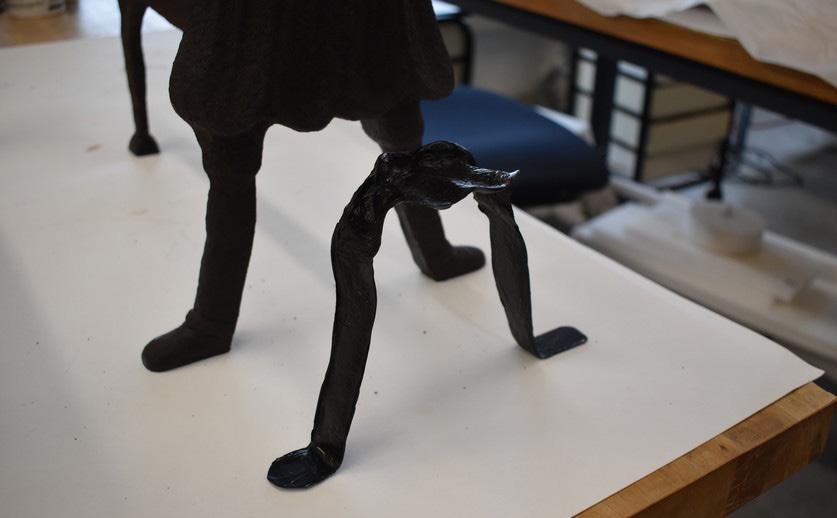
improving the object visually and protecting the interior. The red-brown corrosion layer is now a dark brown to black, more fitting for aged cast iron.
Just as the flaking scale could not be reattached, new metal could not safely be added to the figures. In conservation, new materials are selected that age well, are visually appropriate, and won’t afect original material. A barrier layer of removable resin was applied to the deteriorated legs, and the new legs were sculpted from a moldable epoxy which was textured and painted to match the aged cast iron. Based on a historic photograph, and included on the new legs, are cufs around each ankle: an important detail to include that may well represent shackles.
The cast iron figures are quite heavy, so additional support was added to relieve some of the weight from the narrow legs. Although epoxy is strong and durable once cured, it is still susceptible to cracking if too much force is applied. To relieve pressure from the legs, a carbon fiber mount was made to support the base of the feet, up the inner leg, below the skirt, and back around to the other foot. This is an example of using a novel, modern material that was recently introduced to the field of conservation. The mount is pressure fit and painted to match the legs, meaning it can stay with the object while on display but can be easily removed in the future.
The andirons now stand on their own and are visually cohesive, and the stable material added to the base will help prevent future corrosion. By preserving the figures and restoring integral parts of their original form, focus can be returned to interpreting their meaning within the context of their manufacture up until their placement in the house.
In 1786, James Byers opened a foundry in Springfield, Massachusetts, taking advantage of expanding opportunities for manufacturing in post-revolutionary America. That same year, Byers advertised cast iron implements such as pots, bake pans, teakettles, and skillets, as well as “Negro dogs,” a deeply ofensive reference to figural andirons depicting enslaved humans, as andirons were commonly called “fire dogs.”
While the origins of the Beauport andirons are unknown, they may very well have come from James Byers and Company or one of the many iron works operating in New England in the late eighteenth century. While plain and decorative andirons were common, figural andirons like these were more of a novelty. Makers consulted books and prints circulating throughout the British Atlantic world and reproduced in iron stereotypical depictions of Black, Asian, and Indigenous peoples alongside non-English foreigners like Dutchmen smoking long-stemmed pipes and Scotsmen with flat bonnets and kilts.
These cast iron figures were possibly based on printed illustrations of enslaved men featured in newspaper advertisements, such as one from 1760 announcing the sale of “about 250 fine healthy Negroes" in Charleston, South Carolina. While the real enslaved individuals came from West Africa, the illustrated figures wore skirts and headdresses meant to
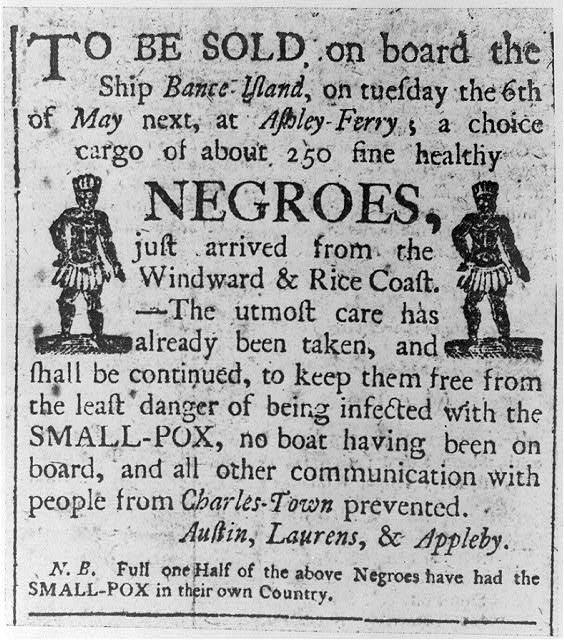
evoke an exoticized medley of African and Caribbean cultures.
Purchasing andirons depicting enslaved individuals implicated consumers in the Atlantic slave trade. These objects directly referenced the de-humanization of African and Indigenous peoples, and their popularity as decorative objects reveals the striking ambivalence felt by many New Englanders toward people of color, even in Massachusetts, which abolished slavery in 1783.
As a reminder, the same hands that contacted the merchant or shopkeeper, signed their name to the account, and handed over coin or credit for these andirons were not the same hands that tended to the fires in the hearth where these andirons stood; nor were they the hands that chopped the logs that rested on the supports. Those individuals remain unknown, their stories yet to be recovered. Objects like these provide a window into a world they experienced – a world wholly distinct from the nostalgic image conjured by Henry Davis Sleeper at Beauport.
The fact of the matter is this: racism is prevalent throughout our history. It is our responsibility, then, as interpreters of that history, to acknowledge it and to explain it in its context and our own to the best of our ability.
Sleeper’s Linebrook Parish Room was mostly intended for evening entertainment: dinners, costume parties held surrounded by Paul Revere lanterns, perhaps with a fire roaring in the hearth on a cooler night. The lighting in the daytime creates shadowed corners and alcoves; the andirons, like other items in the house, can be unthinkingly overlooked when regarding the room as a whole. Small, framed artworks in the back corner of an upstairs bedroom depict Robinson Crusoe and racist caricatures of Indigenous peoples. In the Central Hall, opposite the vibrancy of the amber glass display and next to the monumentstyle depiction of a senatorial George Washington— the top half of a coal stove—is a small statue of a Black woman, the stereotyped “mammy” figure, being used as a doorstop.
That these objects can be overlooked does not mean that they should be. Neither should they be dismissed as a product of their time, the hand-waving An advertisement for a slave auction in Charleston, South Carolina, 1760. Library of Congress.
statement that “that’s just how things were.” That something was considered acceptable in society, was perhaps even upheld and reinforced by society, does not mean that it was not harmful, nor that it was right.
In the last few years, the staf at Beauport have been taking further steps in addressing the history and provenance of objects like the andirons in the collection, and how to answer questions our guests might have about these pieces. Unfortunately, while it is easy to speculate, it is more difcult to provide concrete answers—we do not know when or where or why Sleeper purchased many of the things in his home. Without a record, and being unable to ask the man himself, that remains an unknown.
One question we often receive is: Why do you keep these items in the house? Guests are surprised, uncomfortable, sometimes shocked. To answer, in part: to remove these items is a form of erasure itself. It lessens one’s understanding of Beauport and its creator. Sleeper was a visionary, yes, and a pioneer in the field of interior design—and he was the person who, for any possible number of reasons, purchased these items to put on display in his home. The statements coexist. His skill and creativity should not
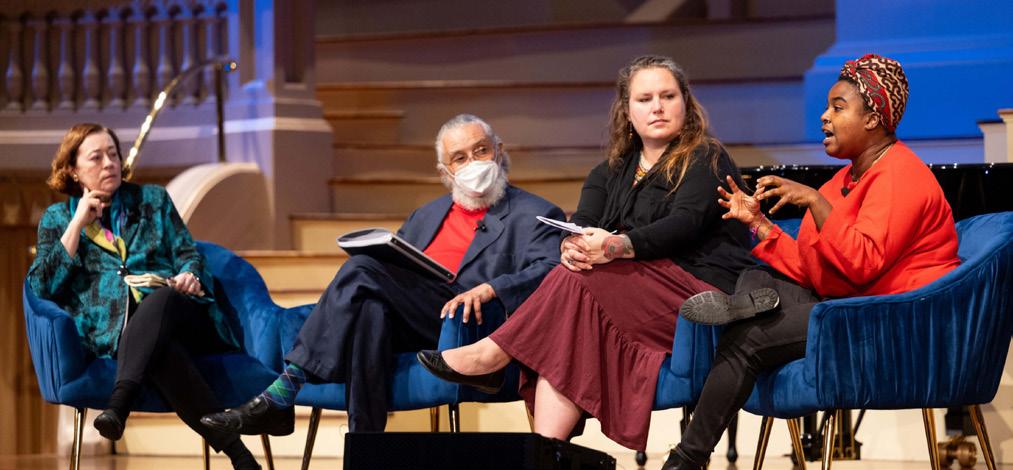

Thursday


mean that these items should be overlooked; collection pieces like the andirons on display do not negate his creativity and skill.
In acknowledging these and welcoming the discussion around them, we can continue to educate ourselves and our visitors about the history that shaped our present day.
The strength of Historic New England’s collections is the ability of any one object to tell multiple stories. In the case of the andirons at Beauport, they tell a story of the eighteenth-century Atlantic slave trade and its relationship to industry and domestic life in New England, as well as a story of early twentieth-century connoisseurship, and the transformation of historic household tools into antique collectibles. Between those two sweeping narratives are the many other stories of everyday people who handled these objects, ensuring their passage from one century to another. By conserving, researching, and interpreting these objects, Historic New England can also ensure that their stories are not forgotten by present and future visitors to our properties.

The Historic New England Summit is your opportunity to gain inspiration from and connect with cutting-edge thought leaders in preservation, arts and culture, public history, education, advocacy, and government. Summit 2023 themes include:
• Sustainability and climate change
• Cultural and artistic heritage
• Community advocacy
• Reframing history education
• Urban planning and affordable housing
• The future of New England cities
The program also features special performances, cultural activities, networking opportunities, and much more.
“We enjoy the sympathetic quality of wood,” remarked Nina Fletcher Little in her book Little by Little, referencing the numerous wooden sculptures collected over a lifetime by her and her husband, Bertram K. Little, who was the director of the Society for the Preservation of New England Antiquities from 1947 to 1970. Among their celebrated assemblage was a double-sided carved and painted medallion of George Washington, attributed to architect and craftsman Samuel McIntire (1757-1811).
President Washington’s travels around the country in 1789 unleashed feverish patriotic celebrations. McIntire was almost certainly present when Washington addressed a large crowd from the balcony of the courthouse in Salem, Massachusetts, and likely met him at an assembly held that evening in Washington’s honor. A few years later, McIntire was hired to design the gates of the military parade ground that was to be renamed Washington Square and opened as a public park. He carved a large medallion of Washington to ornament the West Gate and produced several smaller versions to sell. The shop inventory taken after McIntire’s death in 1811 listed “8 medallions of Washington.” Five of the medallions are known today including these two, later fastened back-to-back. A hole was also bored into the base, and Nina Fletcher Little speculated it was once displayed outdoors on a pole.

At Cogswell’s Grant, their summer home in Essex, Massachusetts, the Littles supported the object atop a grain-painted chest placed next to an English pewter bowl and a carved wooden pineapple in the entrance hall. The paired medallions epitomized the Littles’ shared passion for collecting objects made in Essex County and their preference for “time-worn” wooden things that told fascinating stories.
When the Littles both died in 1993, the couple’s three children selected their favorite items to keep from their parents’ renowned folk art collection before Historic New England opened Cogswell’s Grant as a museum. Their son Warren M. Little took the two-sided medallion and it remained with him until last year, when Historic New England acquired the piece at his estate sale. It is is now on view at Cogswell’s Grant in its original location.